A major theme of our trip was visiting houses of worship. We went to the most famous temples in Hong Kong and Macau, as well as some lesser known ones. It was cool to see all walks of people practicing vastly different religious lifestyles.
Sikhism – Khalsa Diwan Gurudwara Sahib
This 3-story Sikh gurudwara in Wan Chai was entirely covered in white marble and reminded me of Sheikh Zayed Grand Mosque in Abu Dhabi. Having only been to one gurudwara in the past, we felt somewhat awkward like clueless intruders, traversing through the building and curiously wondering where photography was okay vs. not. I may have also led us to sit on the wrong side of the prayer hall reserved for women, but nobody said anything before Phil figured it out and made us move.
On the Wikipedia level, Sikhism is one of my favorite religions because of its all-inclusive philosophy. They run the world’s largest food operation feeding over 100k people per day. So, even though we didn’t interact with anyone here, we knew that we were welcome and could have gotten free food if we wanted to. While I’m not a religious person, I have a lot of respect for people whose faith drives them to do good, and can’t think of any good deed more practical than feeding hungry people.
The gurudwara’s prayer hall was on the 3rd floor. It was a huge carpeted room similar to a masjid’s prayer hall. People (all South Asian, aside from Phil and I) came and went, for different duration, pretty much all in silence. Three men at the front played music with a beautiful vocal component, and it was amplified through a speaker system throughout the building.
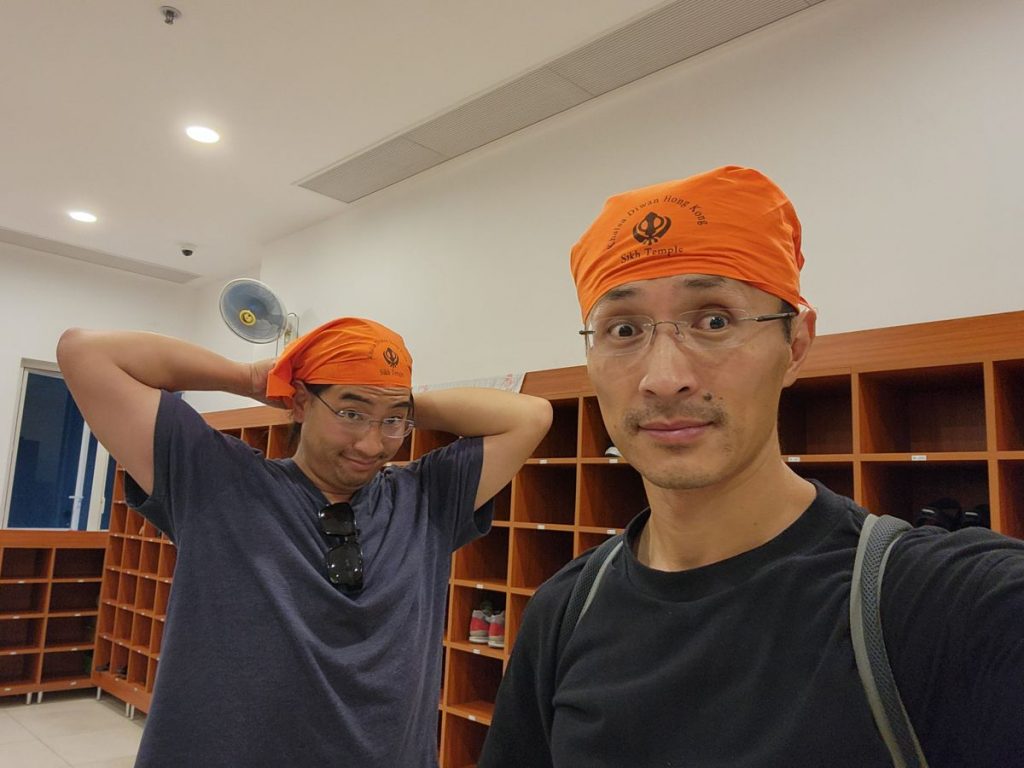
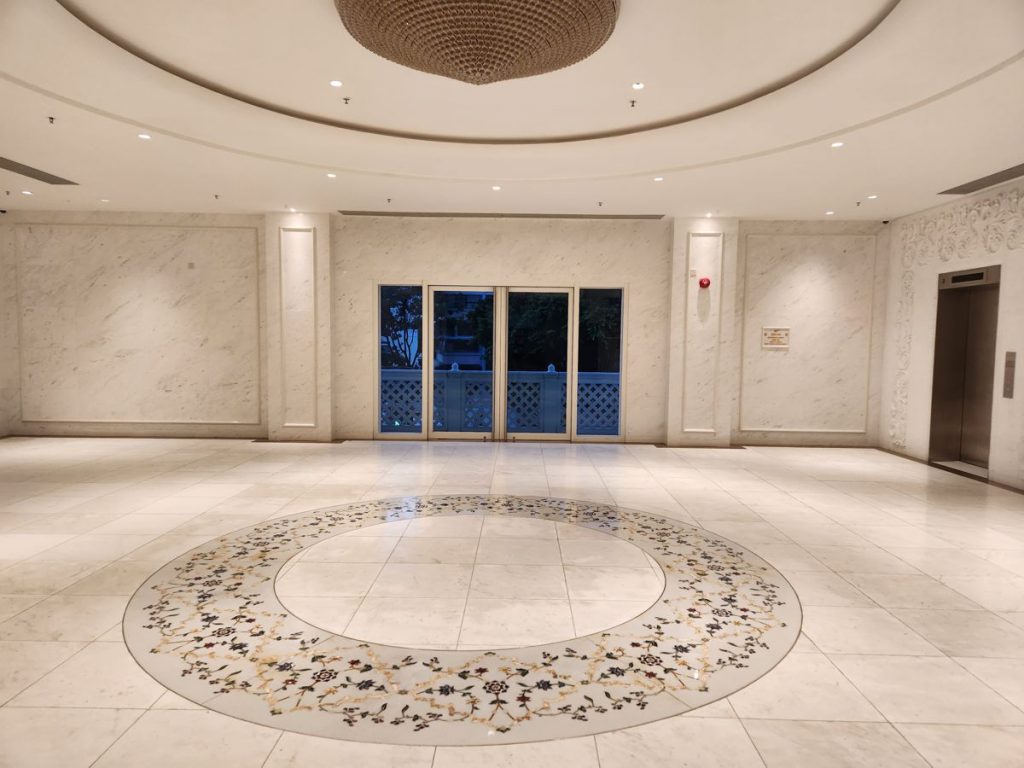
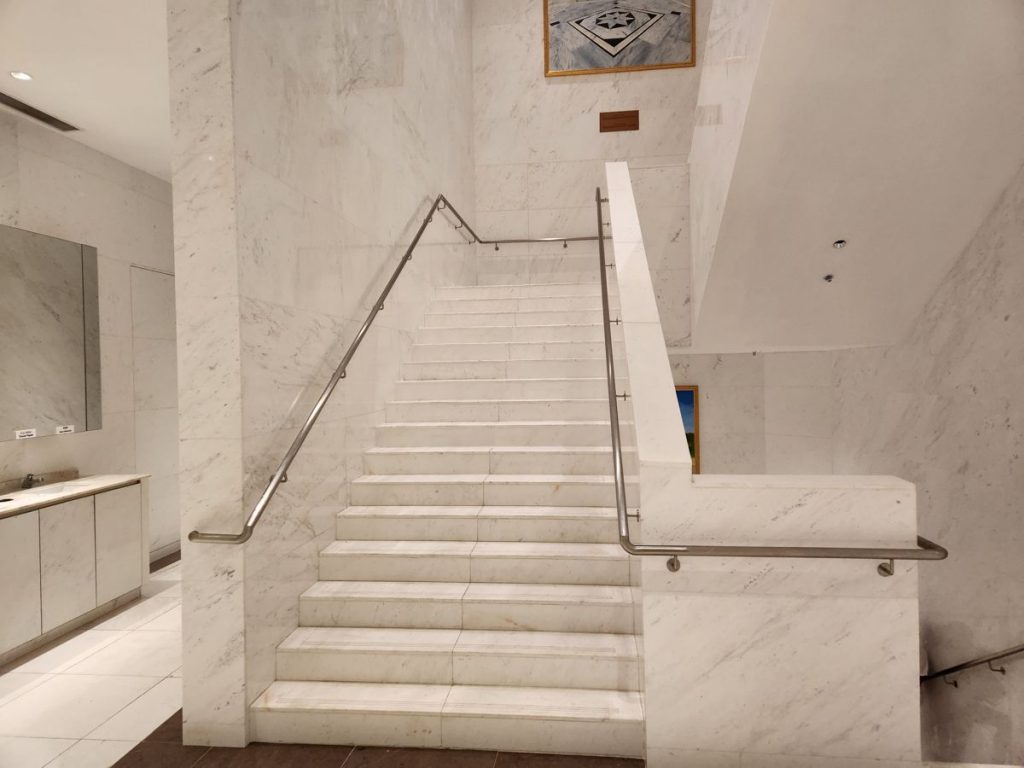

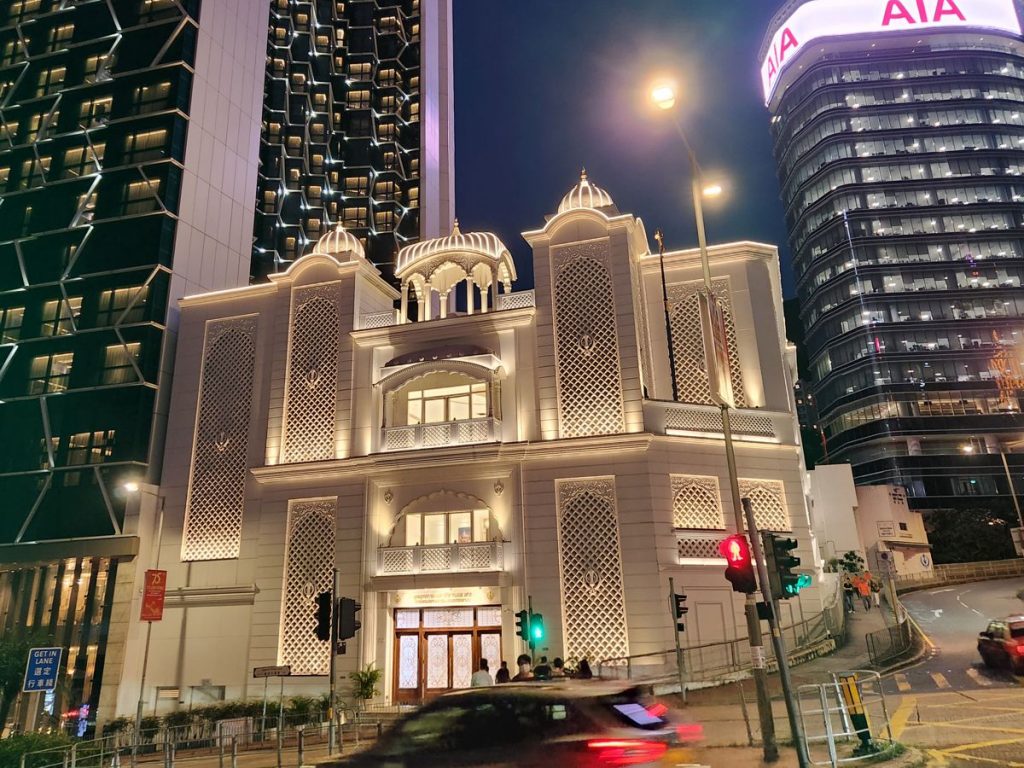
Islam – Masjid Jamia and Kowloon
Near the top of the Mid-Levels Escalators, we spotted this small mosque and decided to check it out. It felt like sneaking into someone’s courtyard, so we looked around quickly and left.
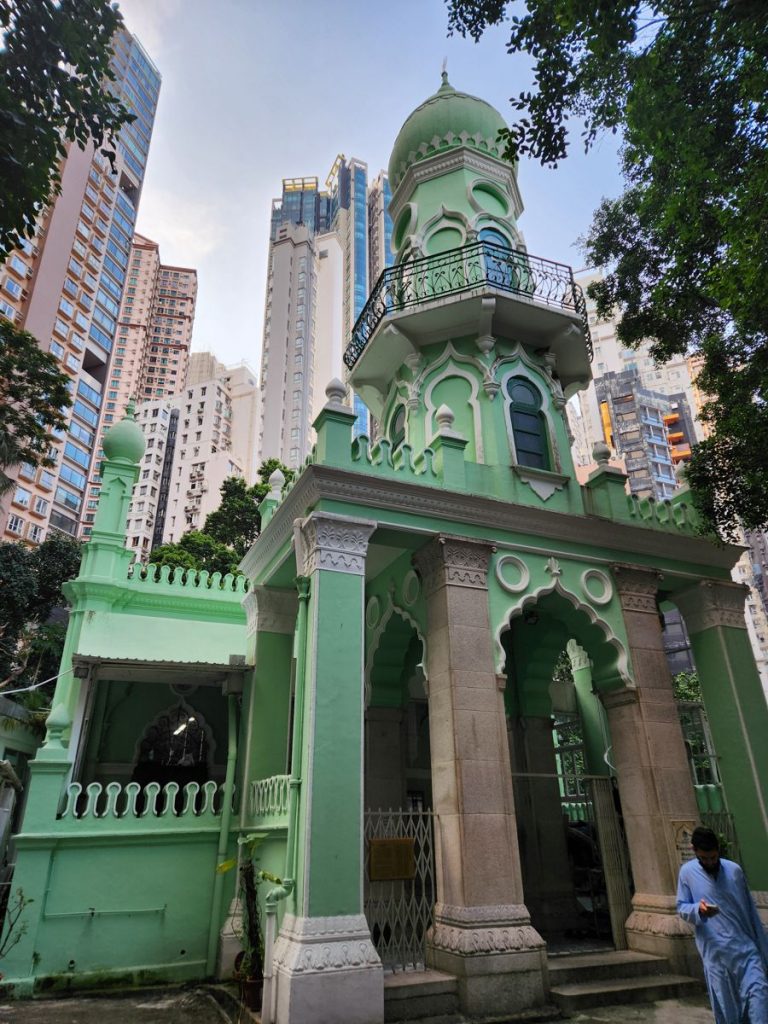
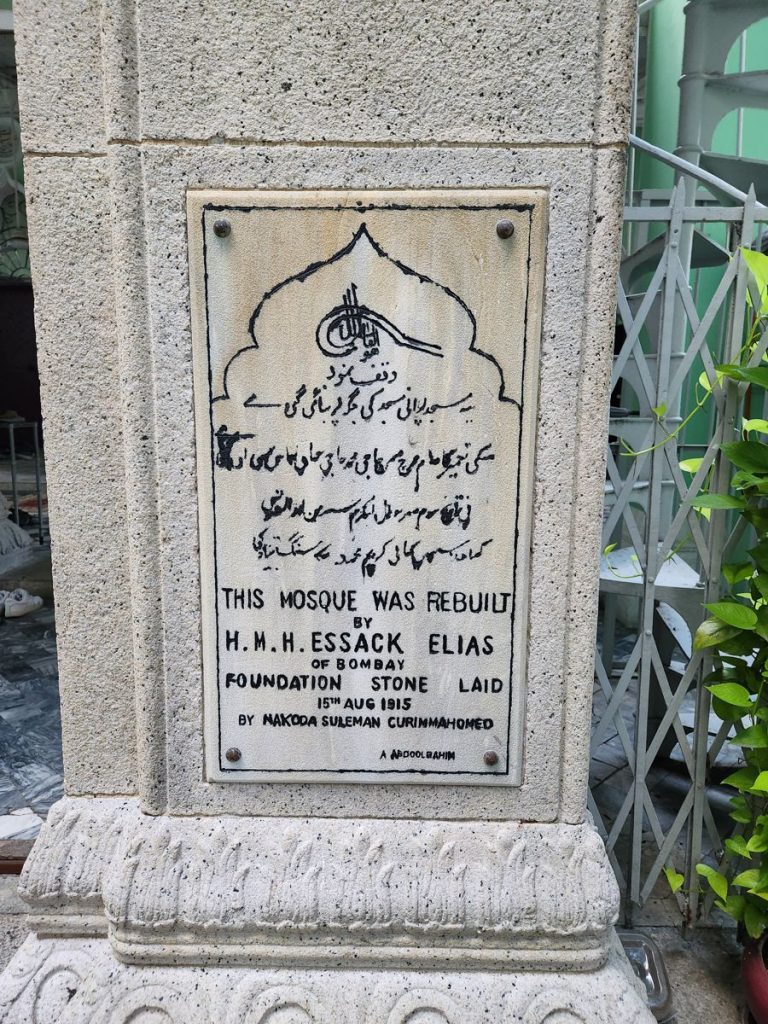
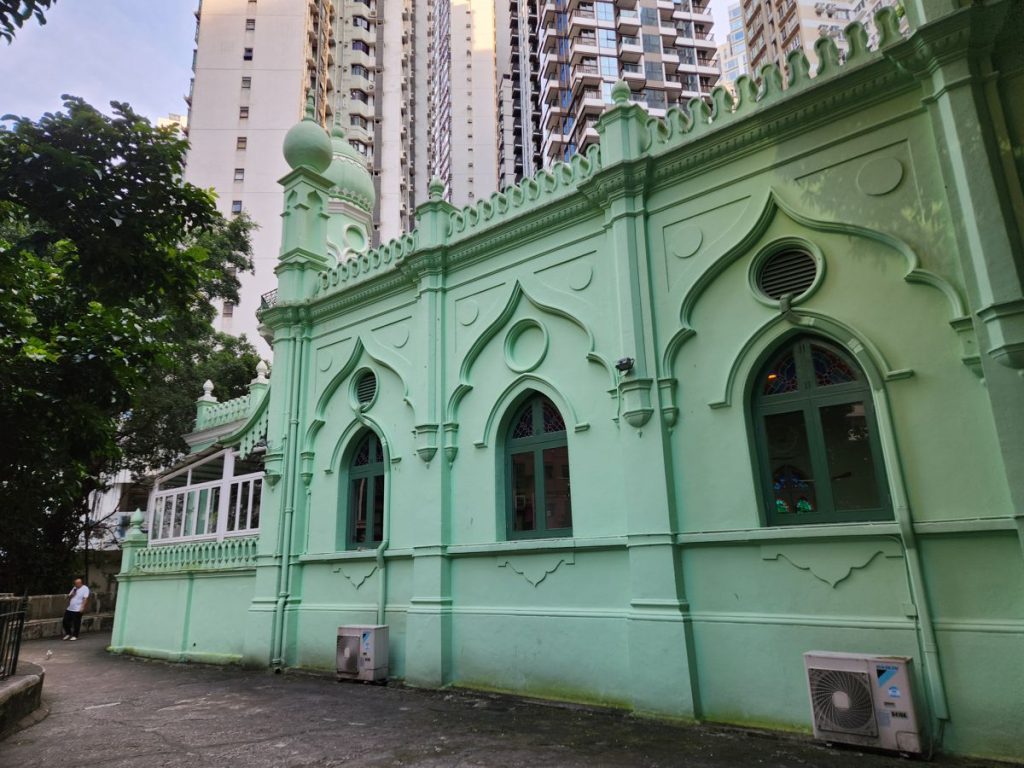
Our next encounter with Islam, at the Kowloon Mosque and Islamic Centre across the street from our hotel, was far more intimate. We walked in on Thursday evening expecting a quiet observatory experience, similar to the gurudwara visit, but were immediately spotted by a volunteer guide. As if not giving us a choice, this older Chinese gentleman started explaining Islamic philosophies and taking us on a tour through the building. The first stop? Women’s Koran study room. Phil and I seriously hesitated, assuming it was inappropriate on multiple levels. But no! It was fine! This semi-frantic guide insisted, pulling us through the room while explaining to us why the women studied separately from men. After that was children’s study room, where a dozen or so kids did their Arabic homework. A fraction of them were focused. Many were fidgeting and goofing around. Nobody thought it was weird that three men were touring through the room.

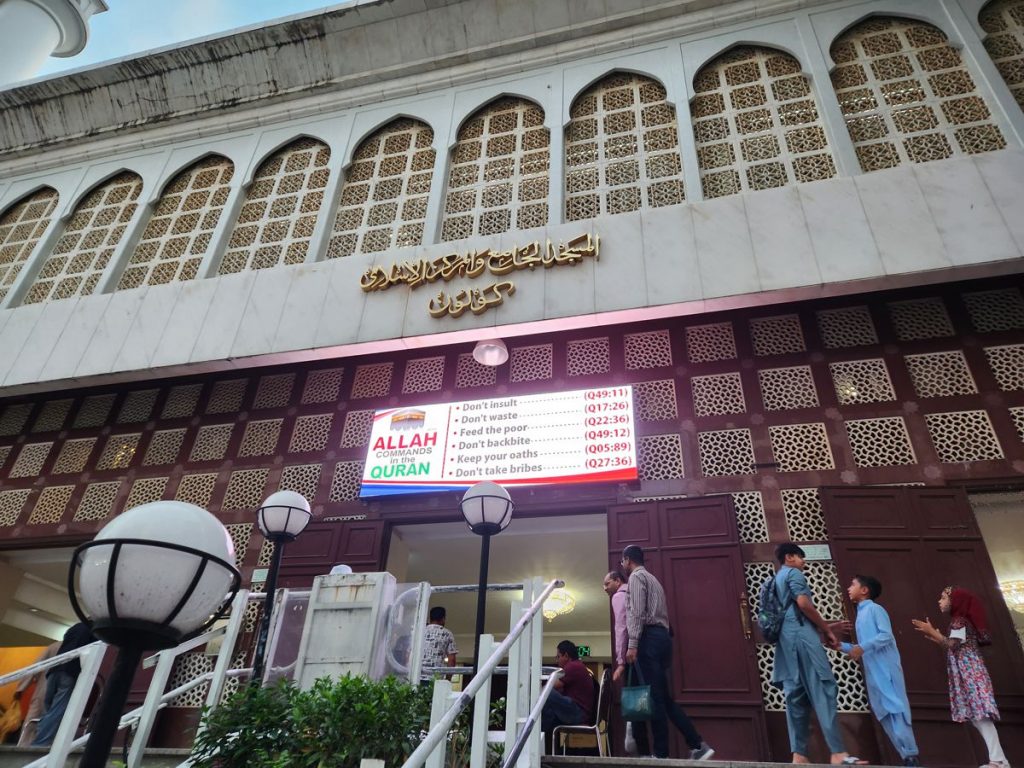
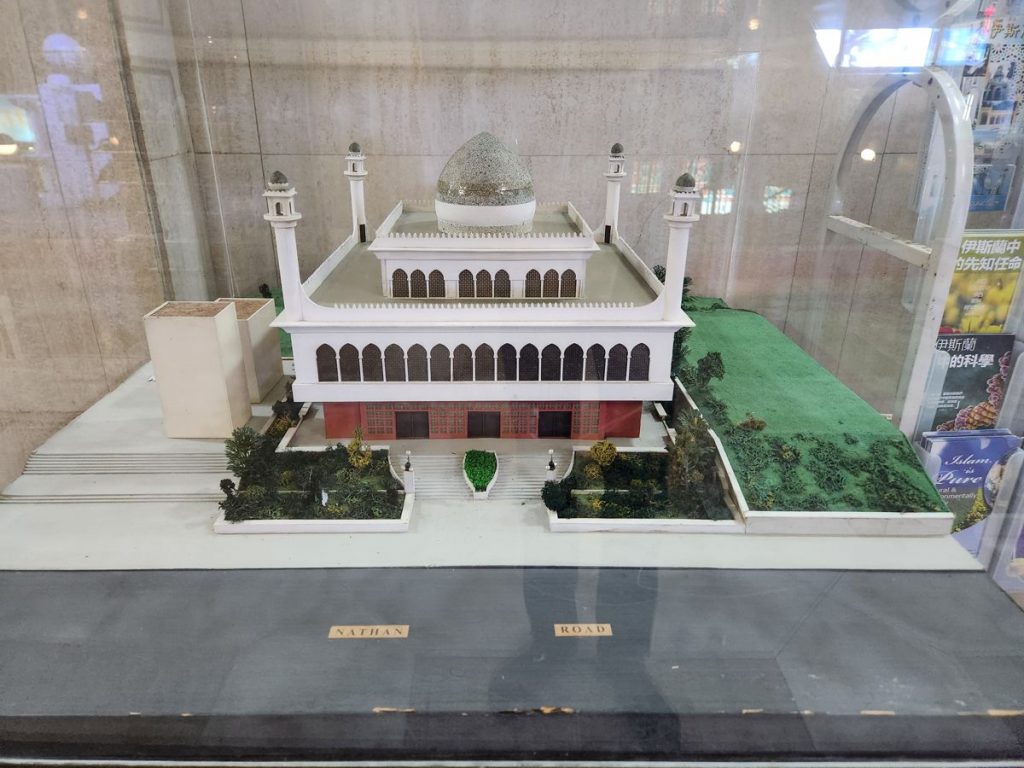
By the time we reached the prayer hall, the guide had to go and handed us to someone else. This second guide was a younger Pakistani man born in Hong Kong, supposedly fluent in Cantonese (not that either of us could verify). A prayer session was starting, and he went to line up with the ~200 people on the carpet. He didn’t insist that we stick around, but welcomed us to either observe in the back of the room or join the prayer group. Phil and I chose the latter.
On a conceptual level, I find it awkward to partake in a worship ritual that I have no faith foundation for. At the same time, I see it as an honor that anyone would share with us an important part of their lifestyle, and love to show my respect through participation. I wasn’t an entire newb at this, either, as I had joined Aamra’s family in prayer earlier this year. It was a privilege to experience this at a friend’s home and, on a whole other continent, do it again in a masjid among strangers. The man leading the day’s prayer was supposedly well known for his poetic style. We couldn’t understand any of it, but it was pleasant to the ears.
After the session, our Pakistani friend found us and continued the conversation. Not in a bad way, but we both thought he underestimated our knowledge of and respect for the religion. Specifically, he was proactively defensive about how the world misunderstood Islam as incubating bad people. I get it, but at the same time didn’t think people with that sort of prejudice would have walked into this building in the first place.
Toward the end of the visit, I noticed that we had not seen any East Asian aside from the first guide, Phil, and I. The brown-to-yellow ratio was reminiscent of Hyderabad, even though we were in the heart of Hong Kong. Our guide explained that most Chinese worshipers go to a masjid on Hong Kong Island, and suggested that we visit it on a Friday to try their Halal dim sum.
He also explained that a lot of Chinese Muslims have surnames localized from names of Islamic prophets. The conversation started when I pointed out how Ma 馬, the first guide’s surname, seemed very popular among Chinese Muslims. Turned out it wasn’t a singular clan, but rather many families independently choosing the character, as the closest phonetic mapping for “Mohammad”, to be their surname. Never knew!
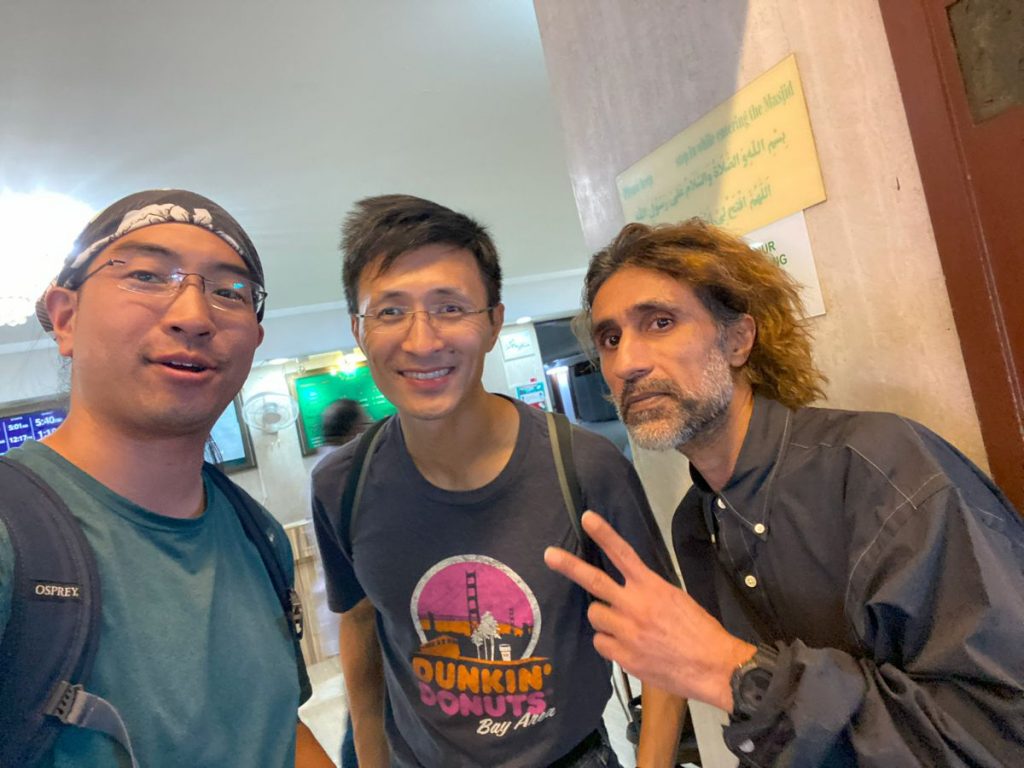
Buddhism – Po Lin Monastery & Tian Tan Giant Buddha
Po Lin Monastery is a large Buddhist temple on the rather remote Lantau Island. It’s hard to believe these days but the temple had stood 100 years (13 for the Tian Tan Giant Buddha) before the Ngong Ping 360 cable car was a thing. Seeing how devotees managed to pool resources to build this gigantic complex at such an inconvenient location is really the best evidence for the power of a religion.
Among all places of worship, I felt most “at home” in a Mahayana Buddhist temple because my younger self had spent much time with family immersed in its rituals. During this visit, my sense of familiarity also came from having just finished chapter 3 of Black Myth: Wukong, which featured a grand Buddhist temple. The sentiment probably made me less curious than I should have been. For example, I had little interest in trying Po Lin’s vegetarian meals because I knew too well what Buddhist temple food tasted like. Thankfully we had Phil, who disappeared for a while and came back with some mochi from the take-away counter. It looked to be standard fare at dim sum restaurants, but it was so delicious.
My favorite part of the visit was climbing up to the giant Buddha statue. Inside the statue was a sizable building with shrines (including some late celebrities), a museum, and a gift shop.

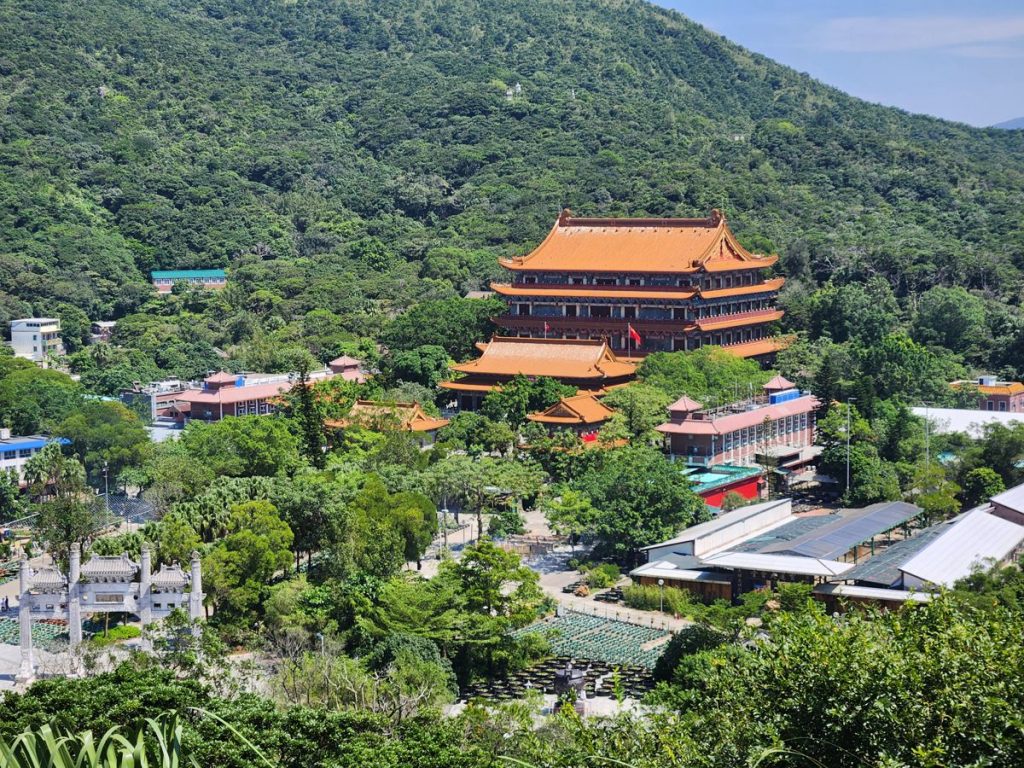
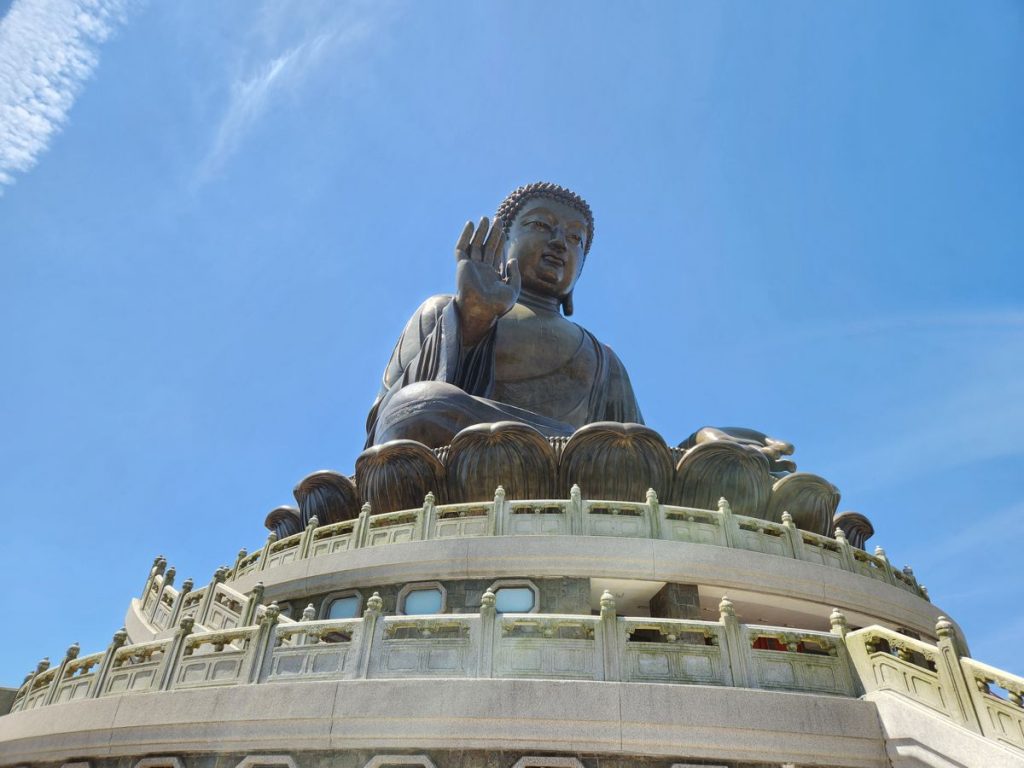
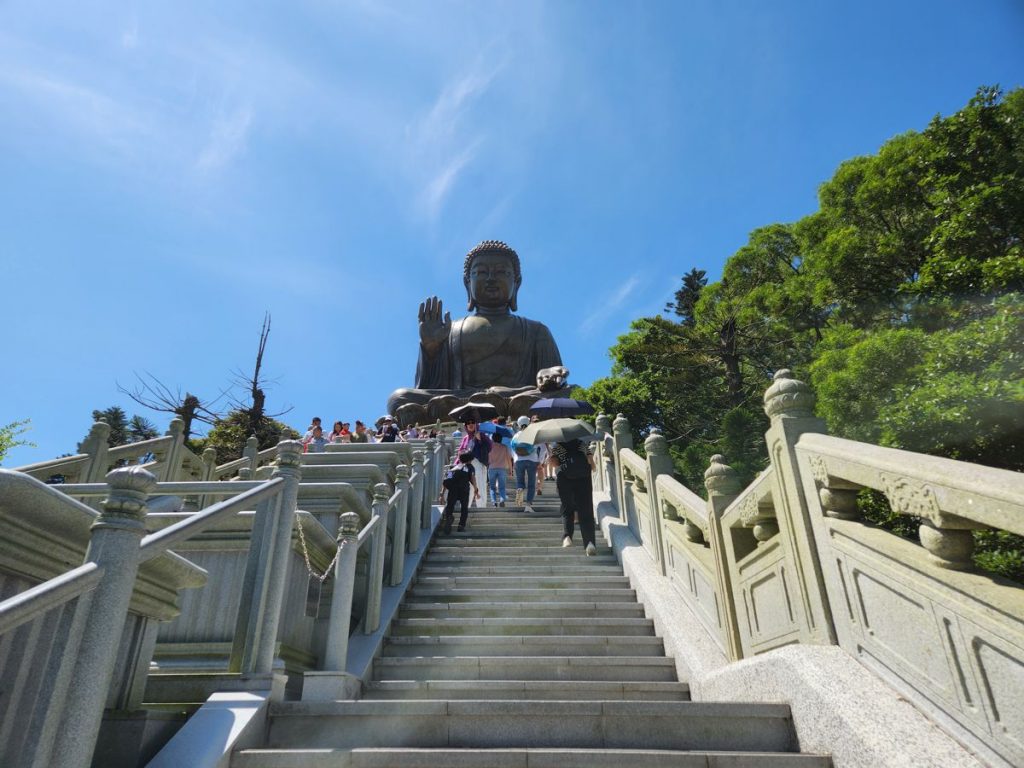
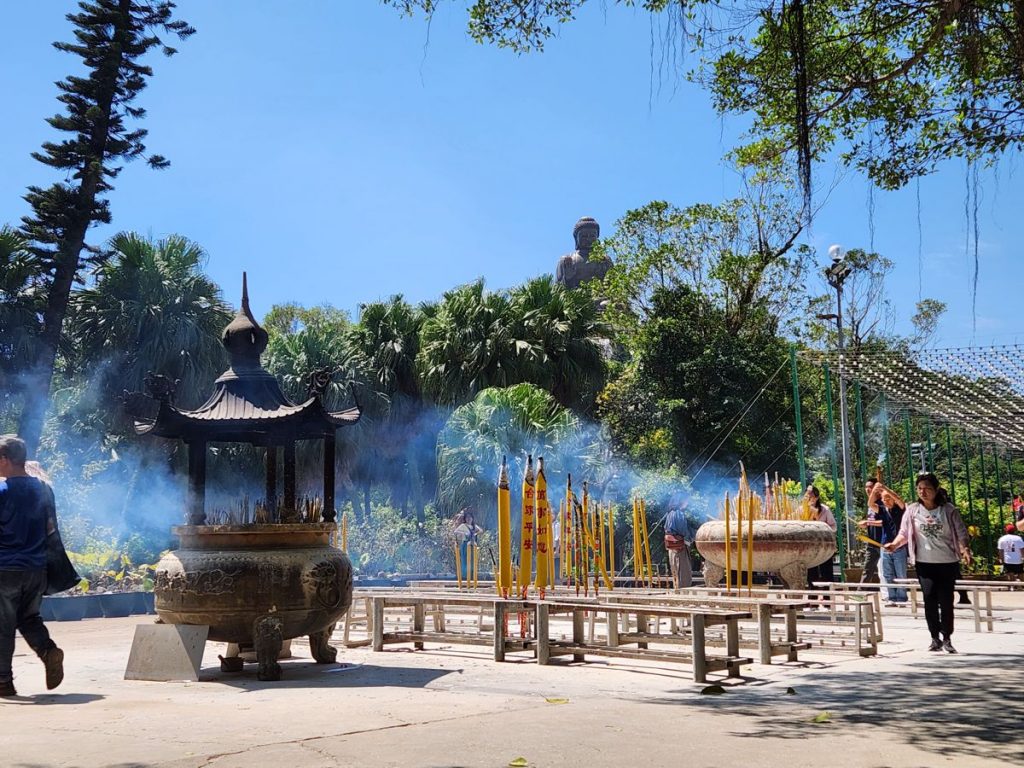
Buddhism – Kun Lam (Guanyin) Statue in Macau
It looked quite different from how Guanyin is commonly depicted in Chinese temples.
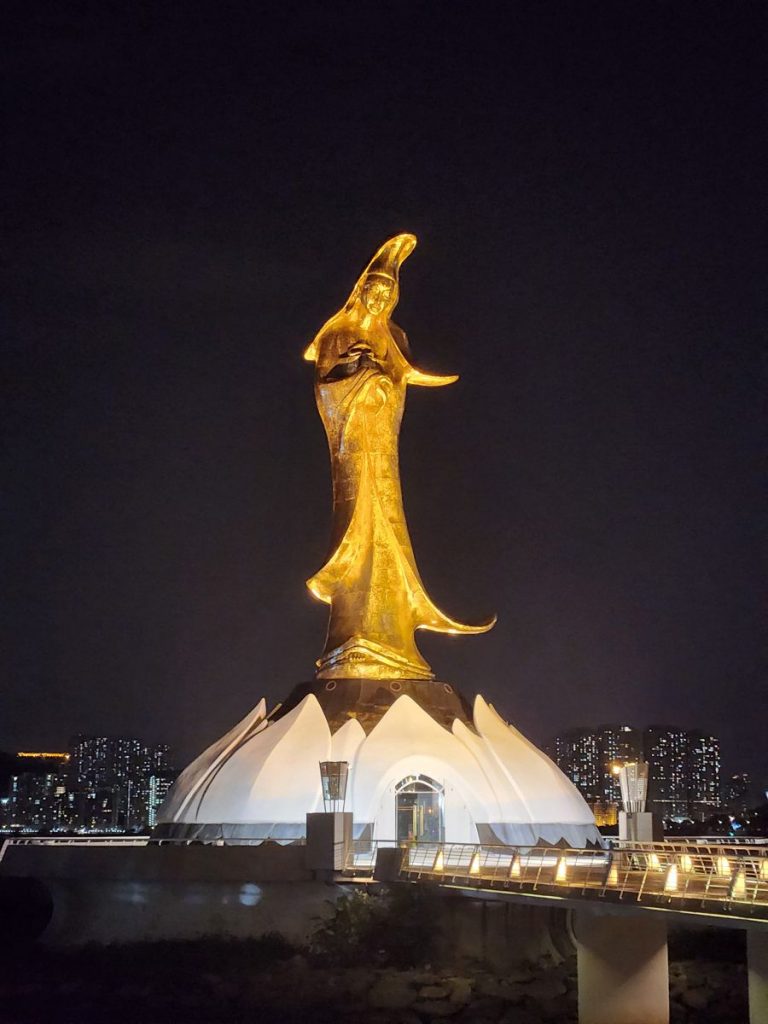
Catholicism – Ruinas de Sao Paulo
The ruins of St. Paul was a curiously preserved facade of a cathedral, which 400 years ago boasted as Asia’s largest Catholic church. These days it’s the most Instagrammed back drop in Macau, which is ironically fitting because of how literally shallow it is.
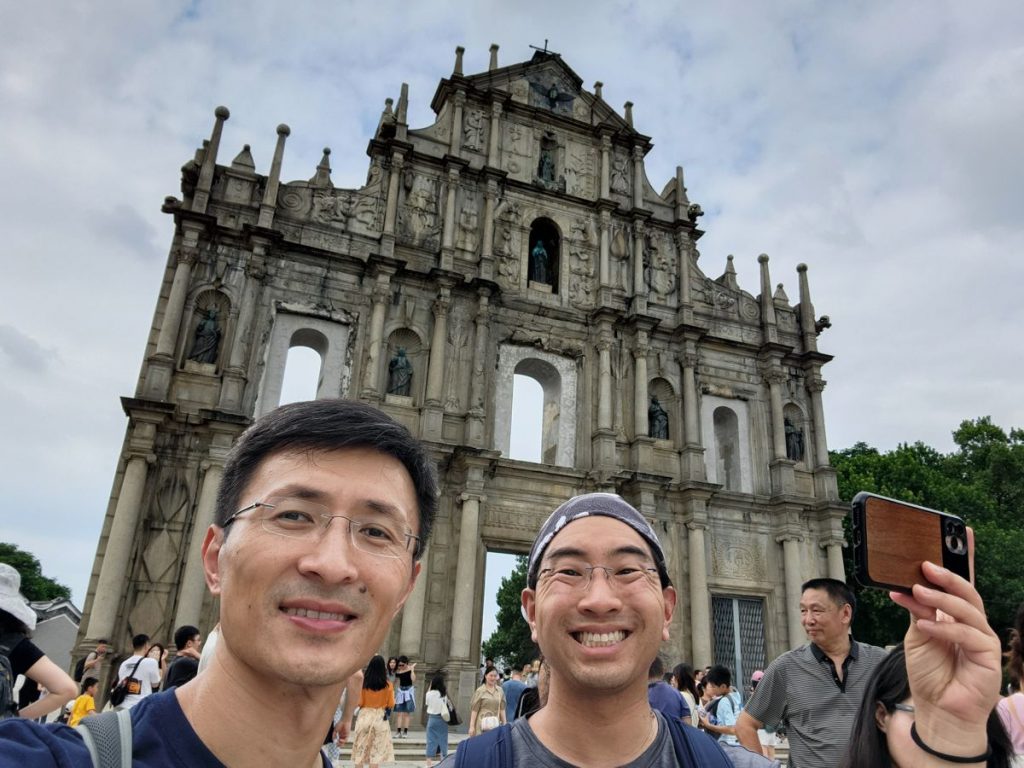
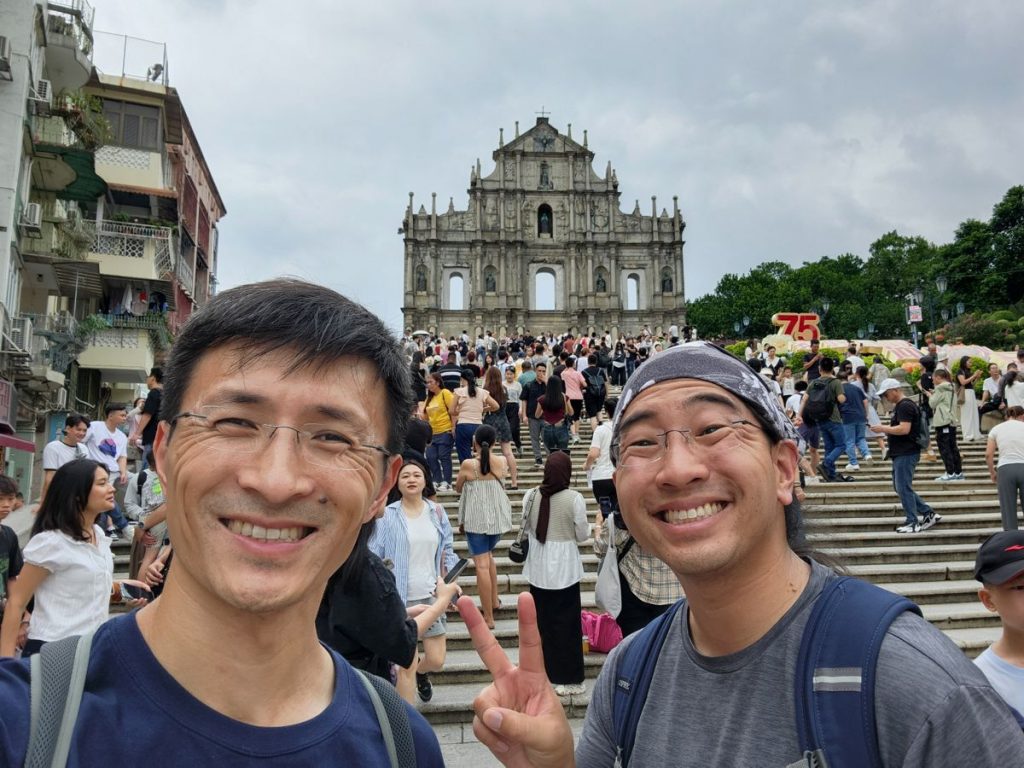
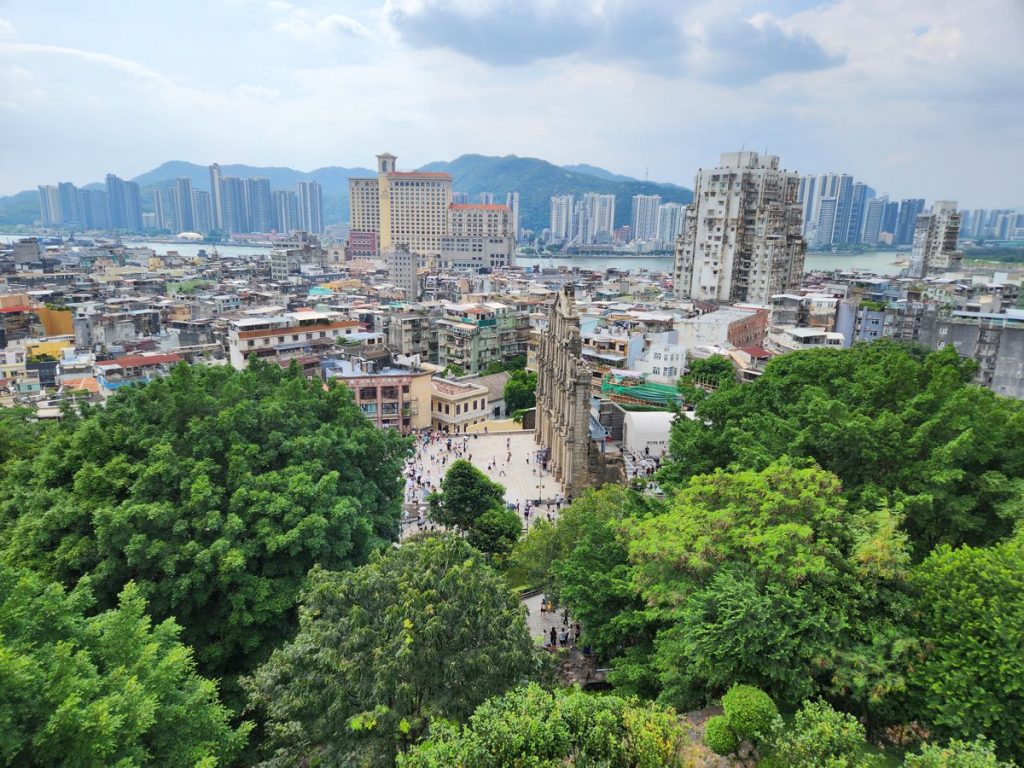
Daoism & Folk Beliefs
Venturing away from the major organized religions, we’ve got flavors of Chinese folk beliefs. While generally catalogued under Daoism, these temples and shrines are fluid with ideas and not tethered to a particular authority for worship. On one hand, the lack of a solid theology may seem disorganized, and the decentralized belief system often attracts con artists to scam naive people. On the other, these places represent common folks and their common needs. Compared to the religions with complex cosmologies or ambitious goals for the infinite afterlife, there’s something sweet about giving simple people a channel to pray for their most practical desires.
The first up is the A-Ma Temple in Macau, worshiping A-Ma (Mazu, Matsu), a deified actual woman believed to protect fishermen at sea, and also the namesake for Macau. In the coastal regions, the popularity of this goddess reflects people’s need for the safety of their loved ones. The worship of A-Ma, in my opinion, transcends religions and superstitions as a basic human desire to survive.
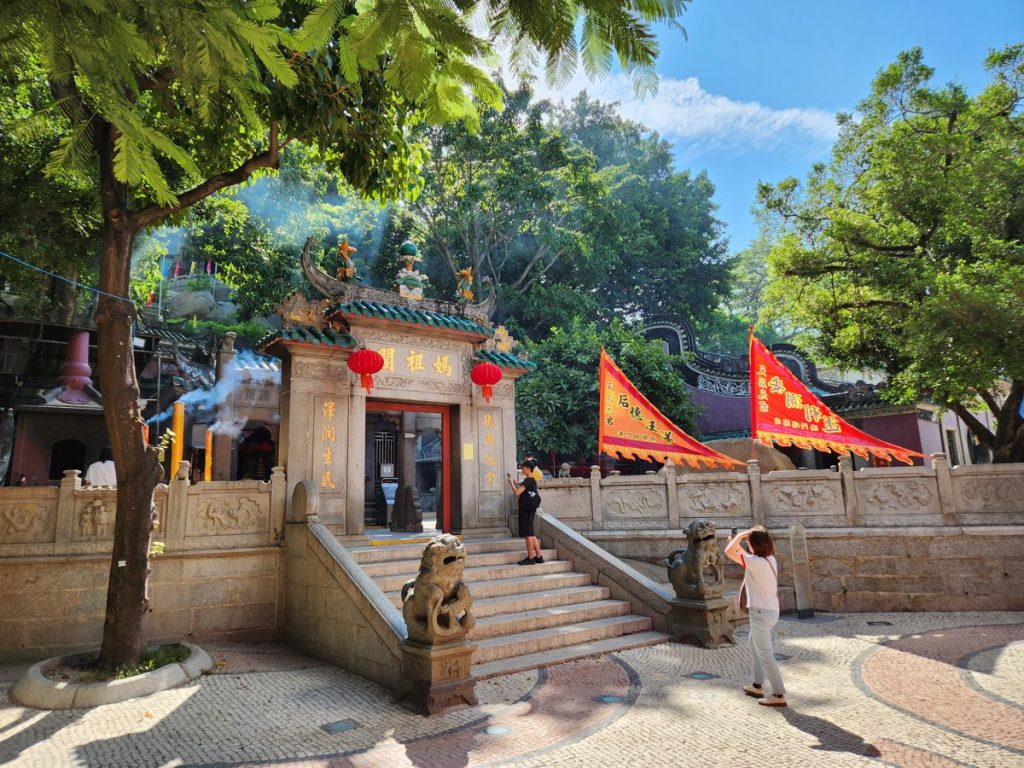
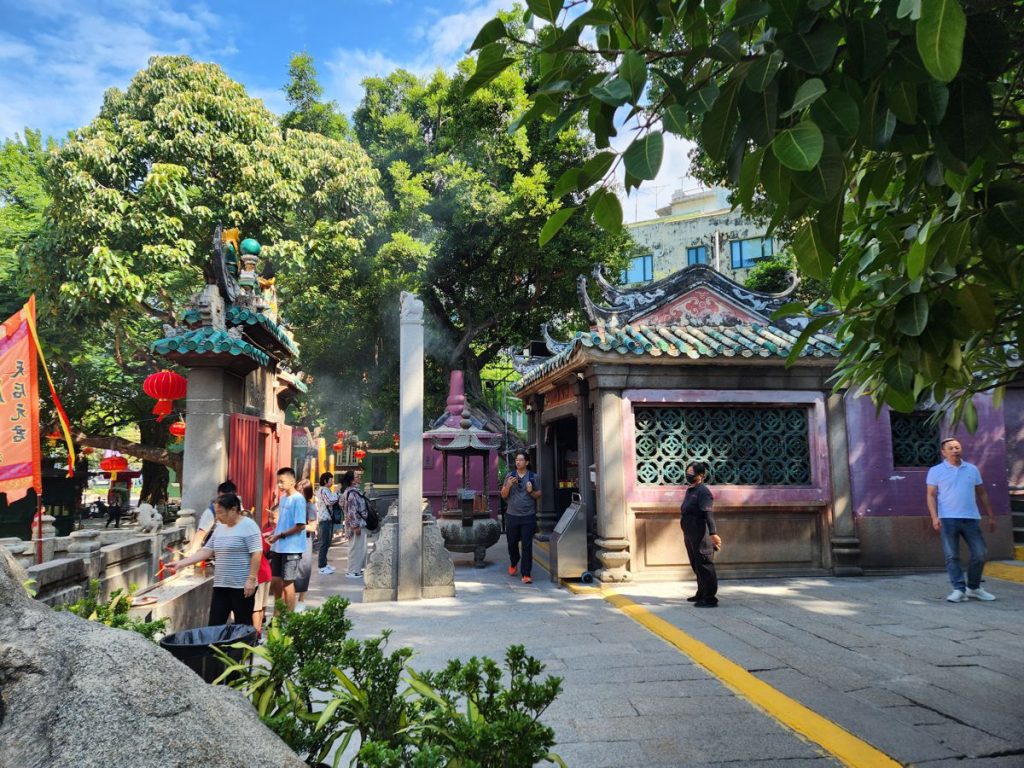
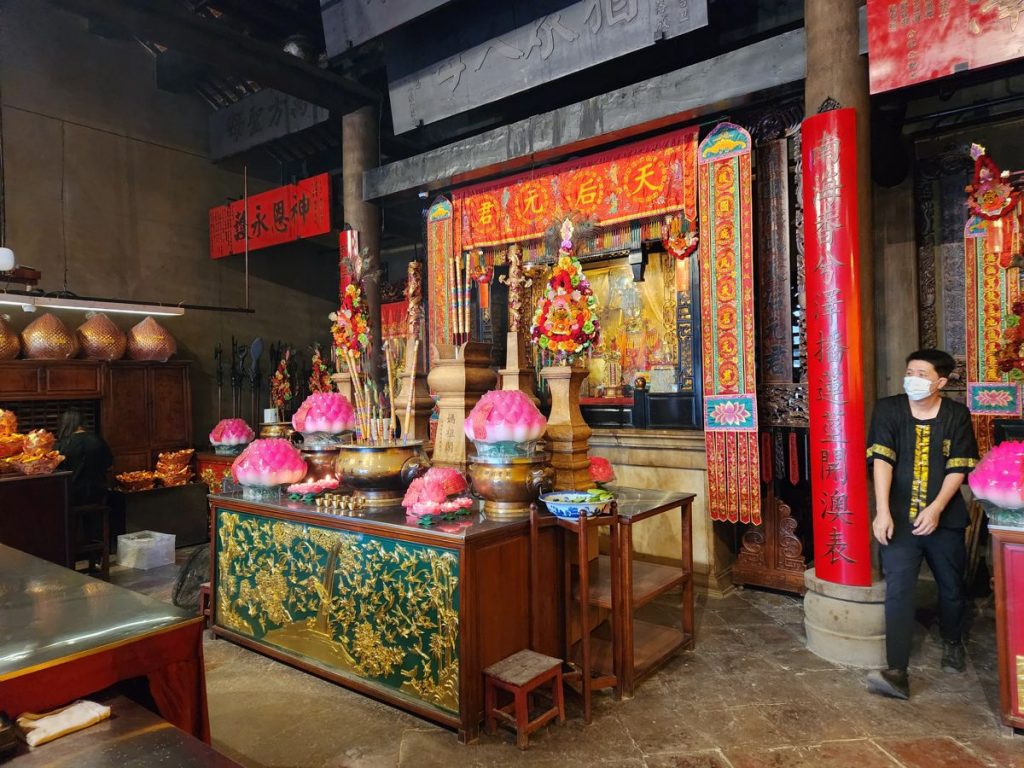
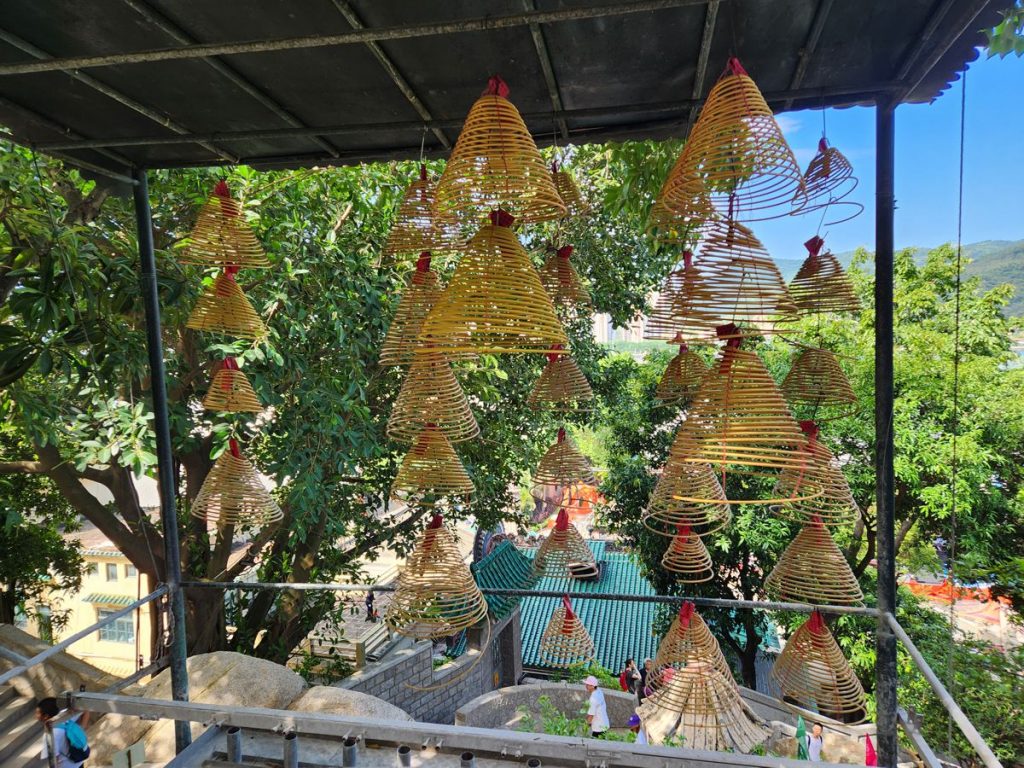
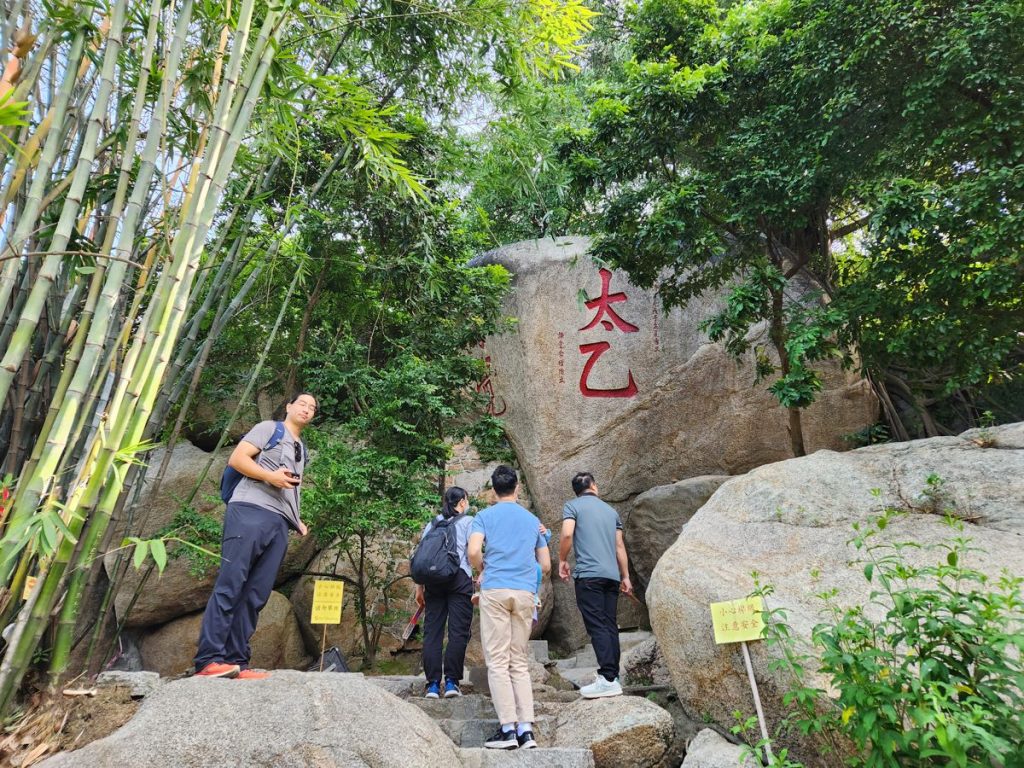
Of similar status is the Tin Hau Temple in Yau Ma Tei, on the Kowloon side of Hong Kong. The famous shopping district Temple Street is a direct result of this temple’s popularity.
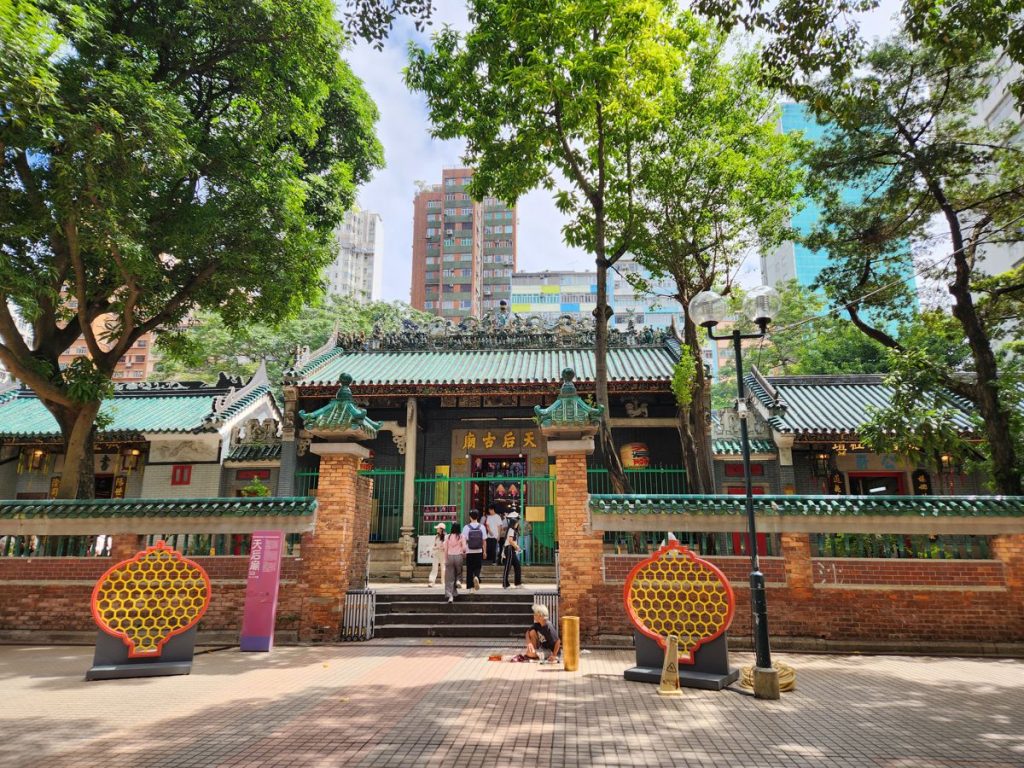
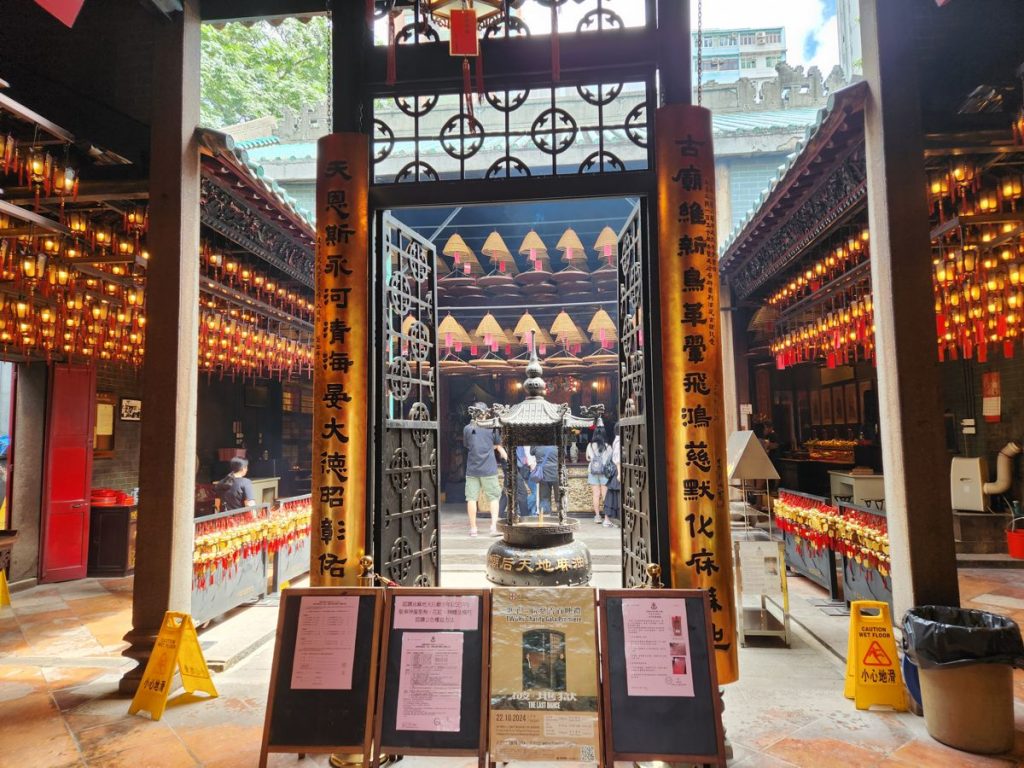
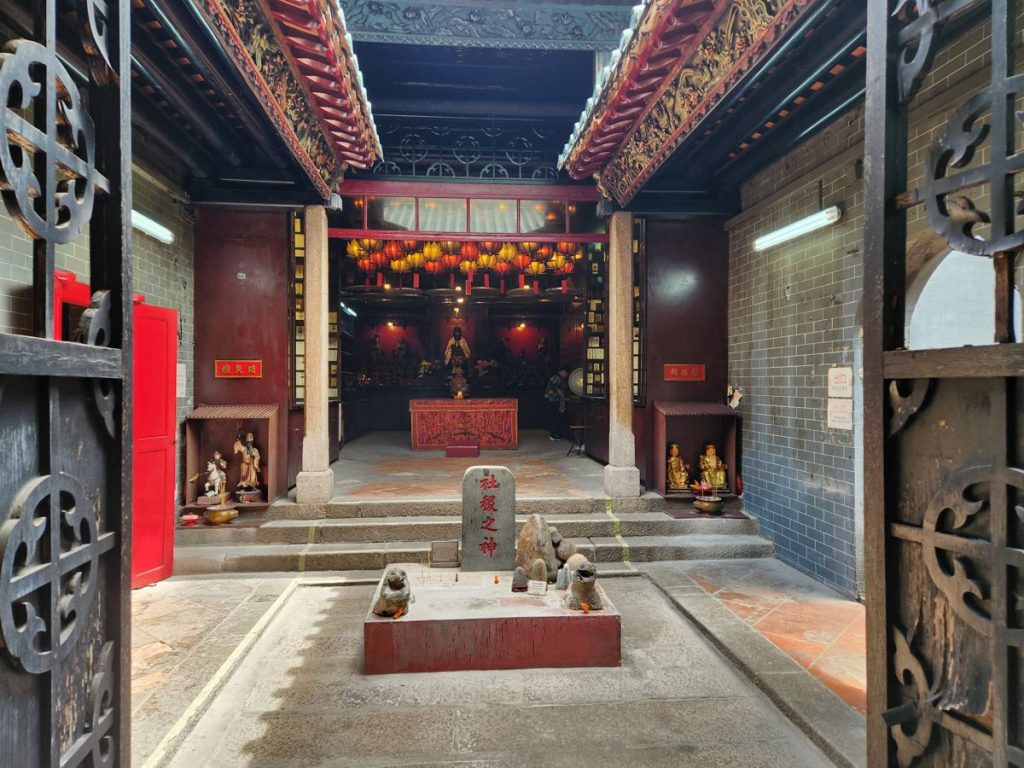
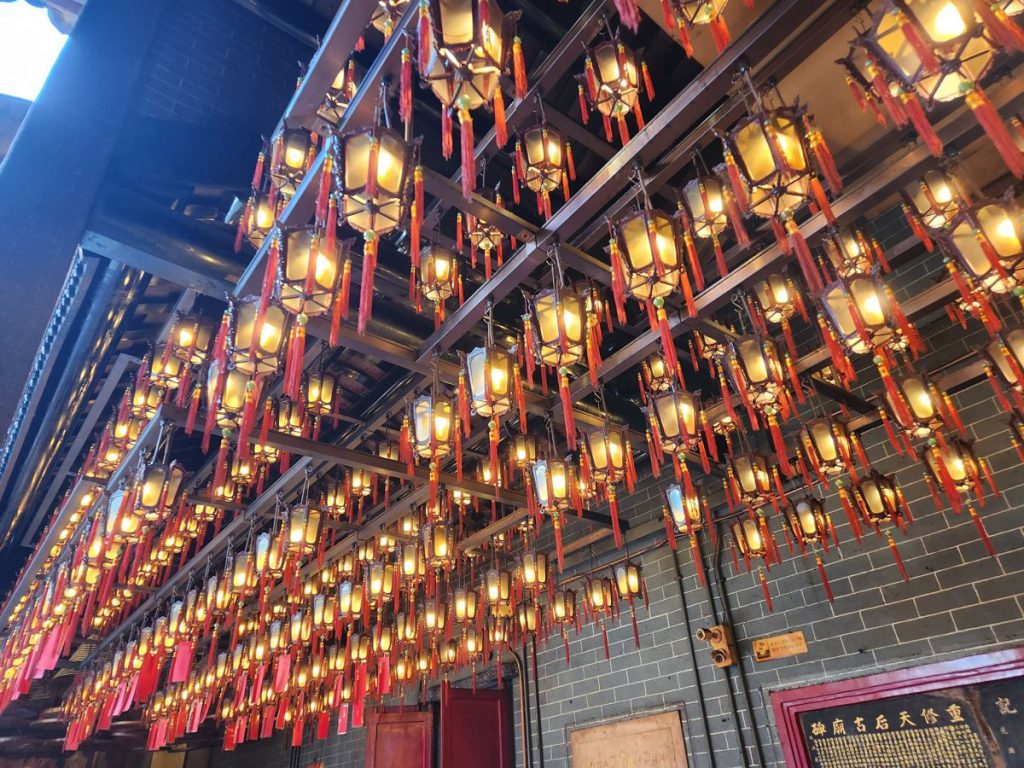
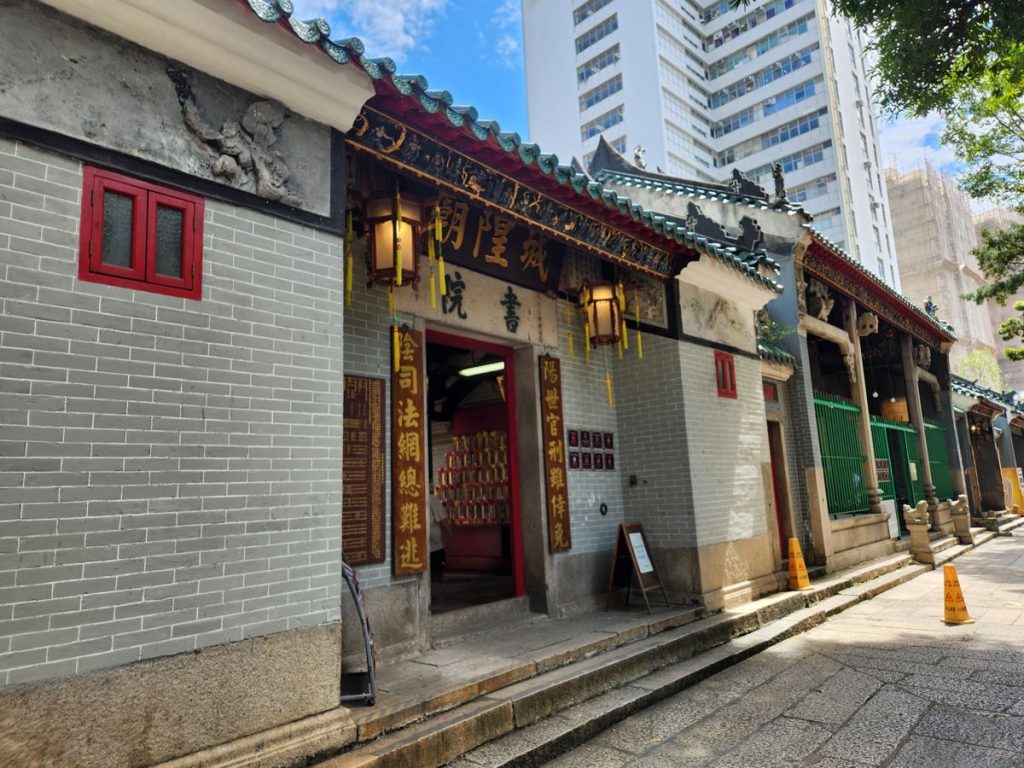
The Hong Kong Island side had a storied Lin Fa Temple, smaller in scale but similarly popular.
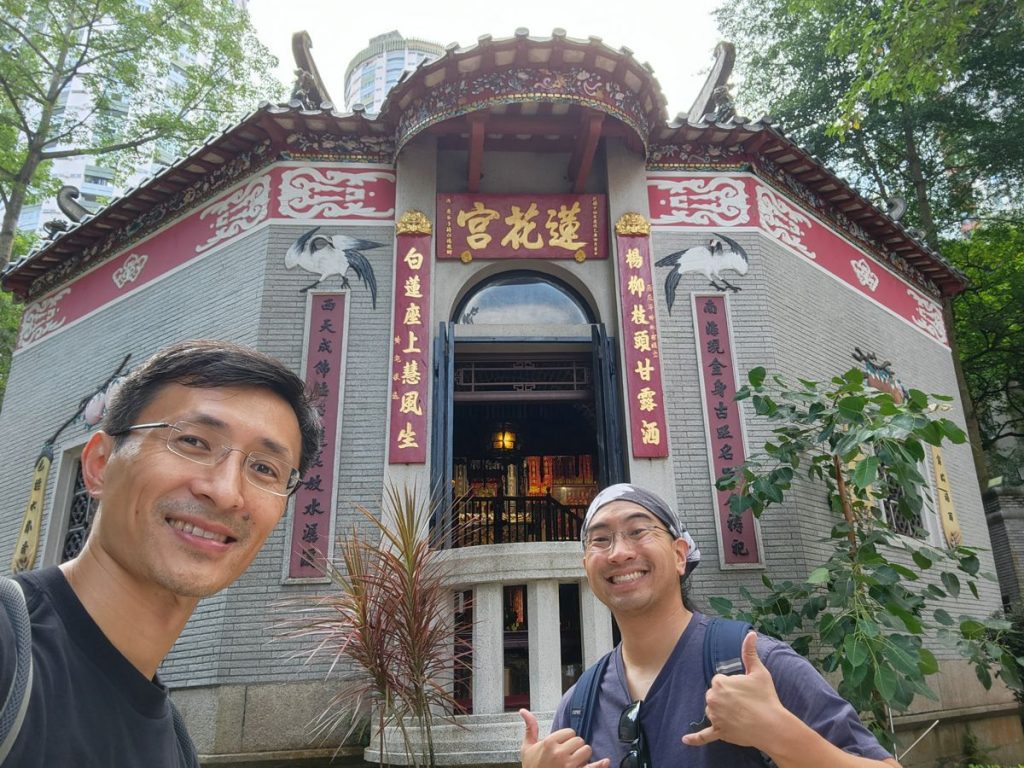

In Macau, there was also a tiny Na Tcha Temple…
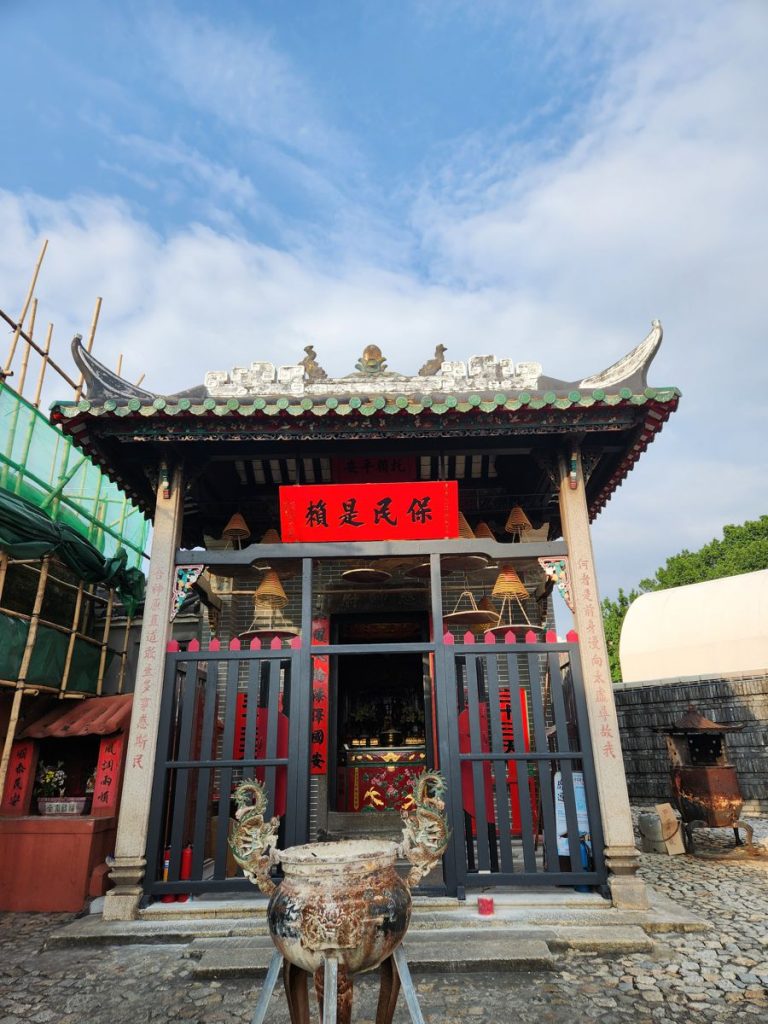
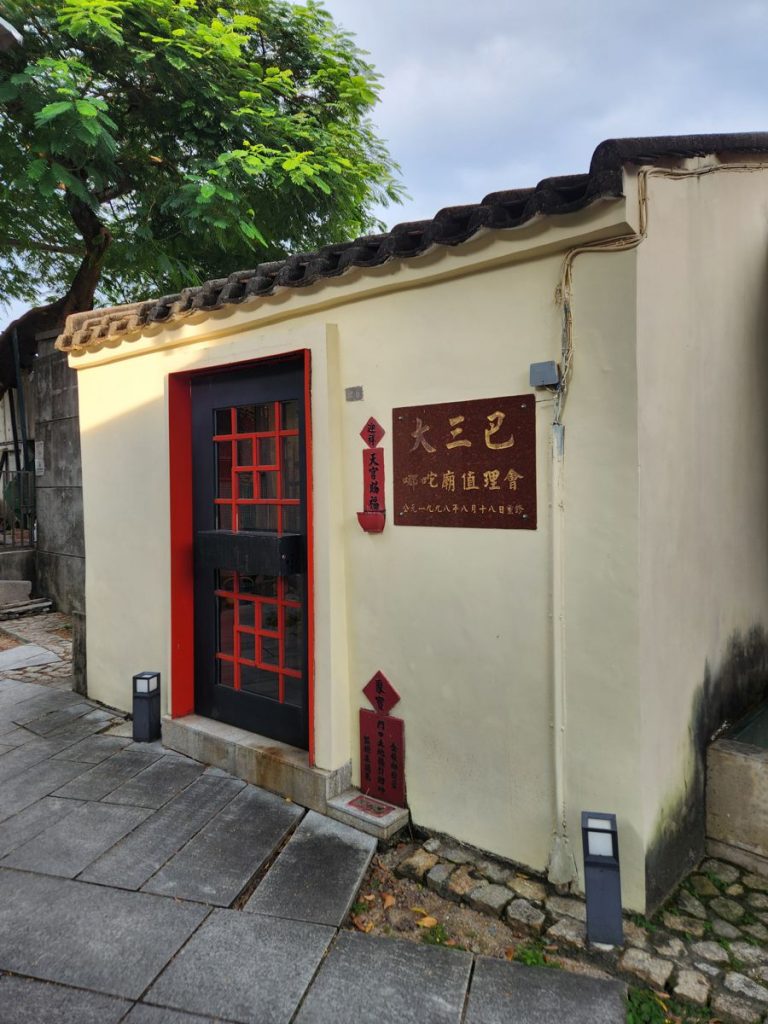
As well as a Sam Kai Vui Kun Temple:
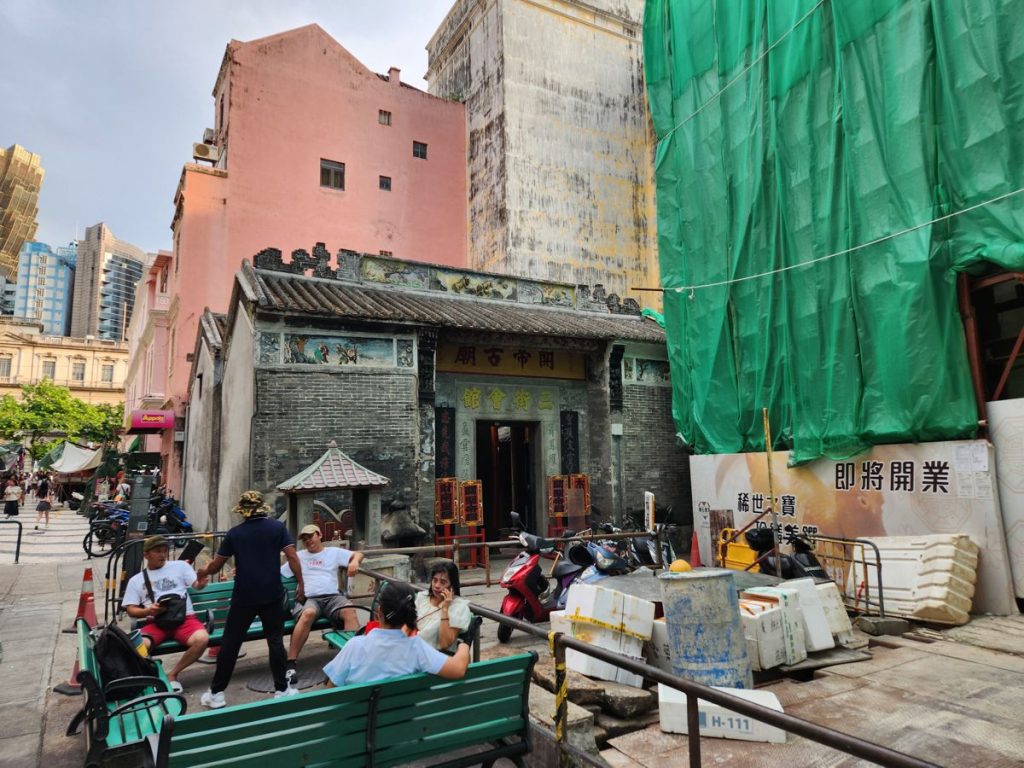
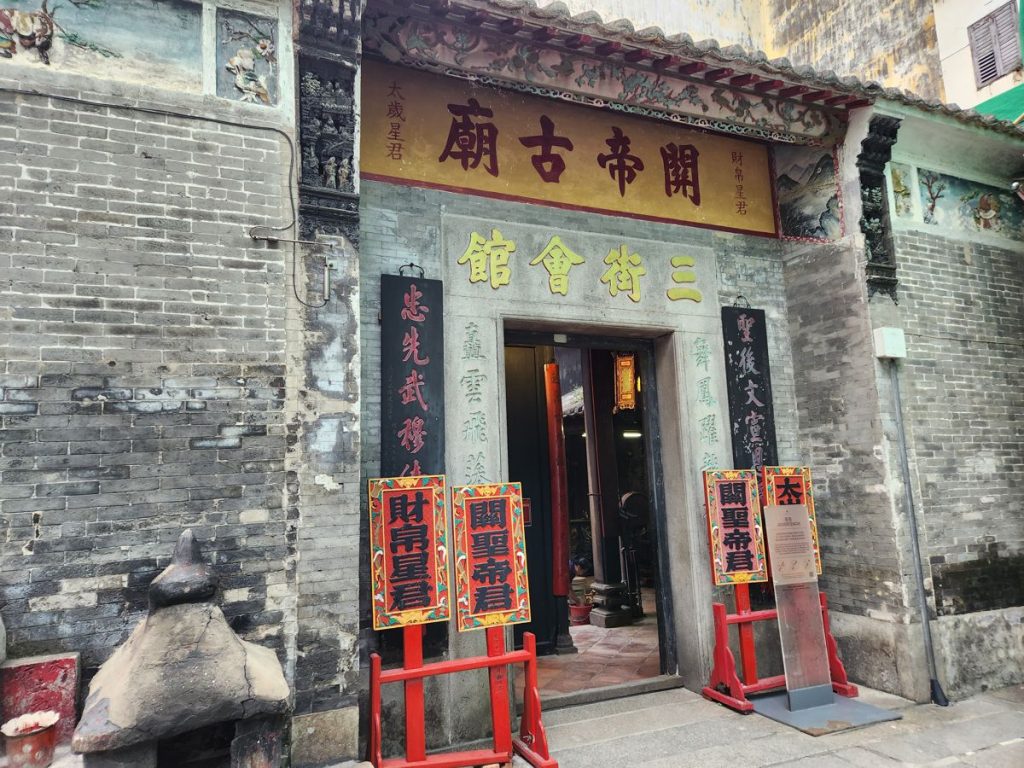
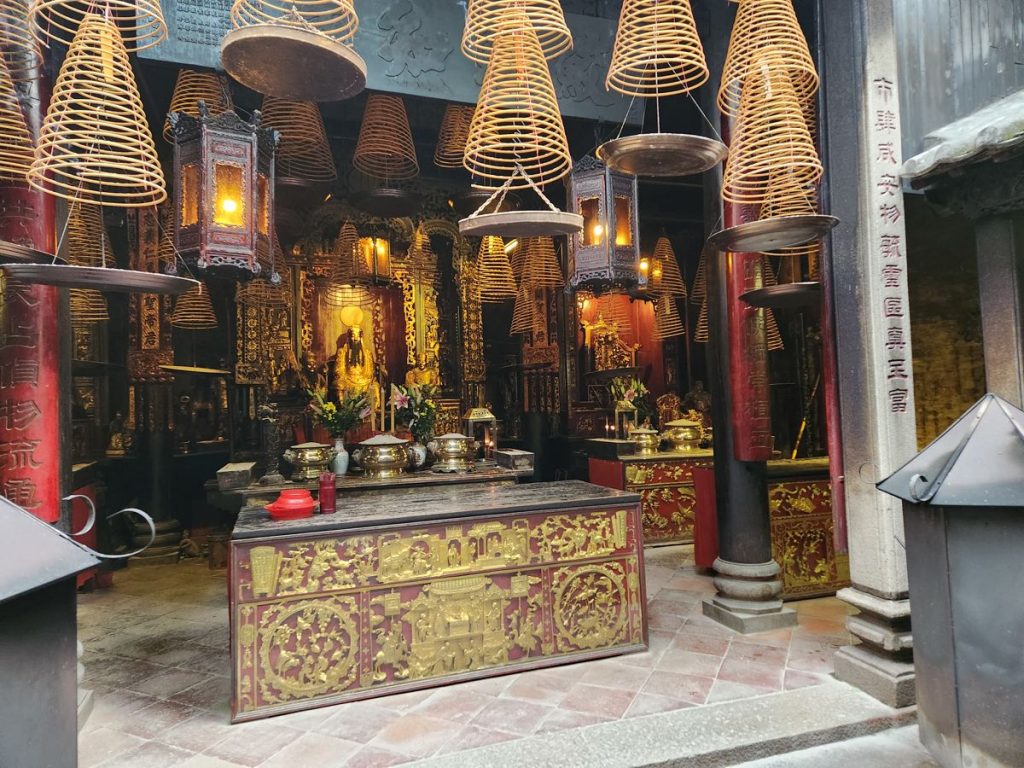
Tu Di 土地 is the low ranking deity specific to each and every locality. They are the most down to earth (literally, since Tu Di = earth) supernatural beings and the most influential to common people’s everyday affairs such as health, security, and wealth. Their shrines are humble and everywhere. I grew up with these all around me… but until visiting Macau, I had never seen these shrines so consistently displayed in front of every house.
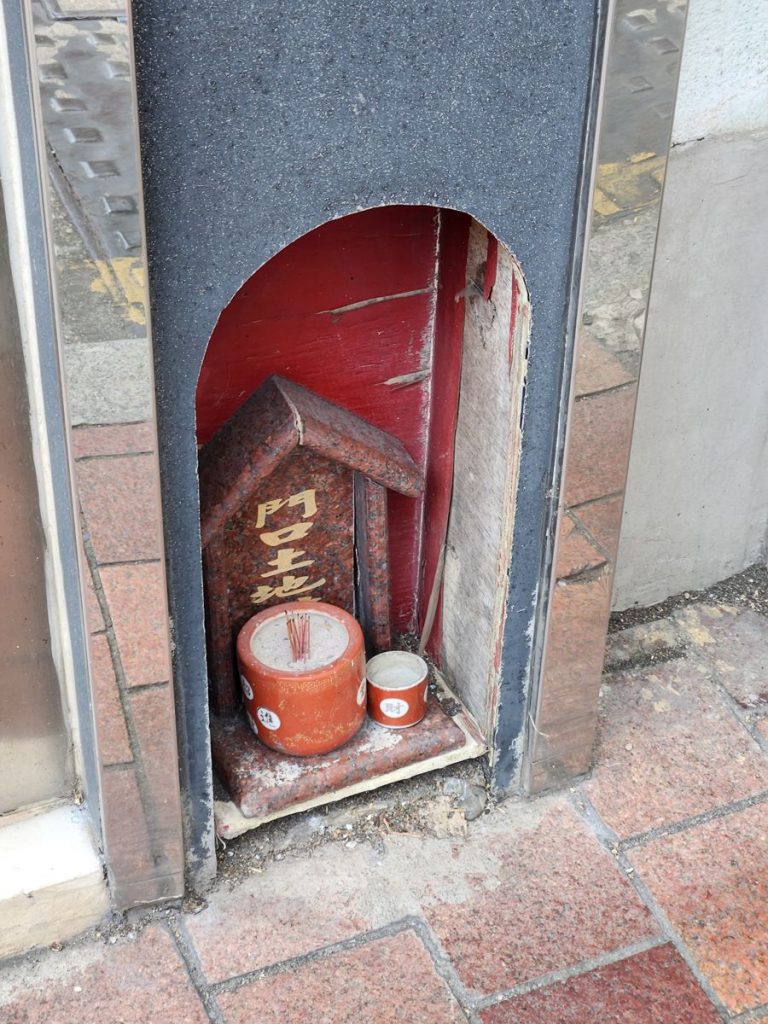
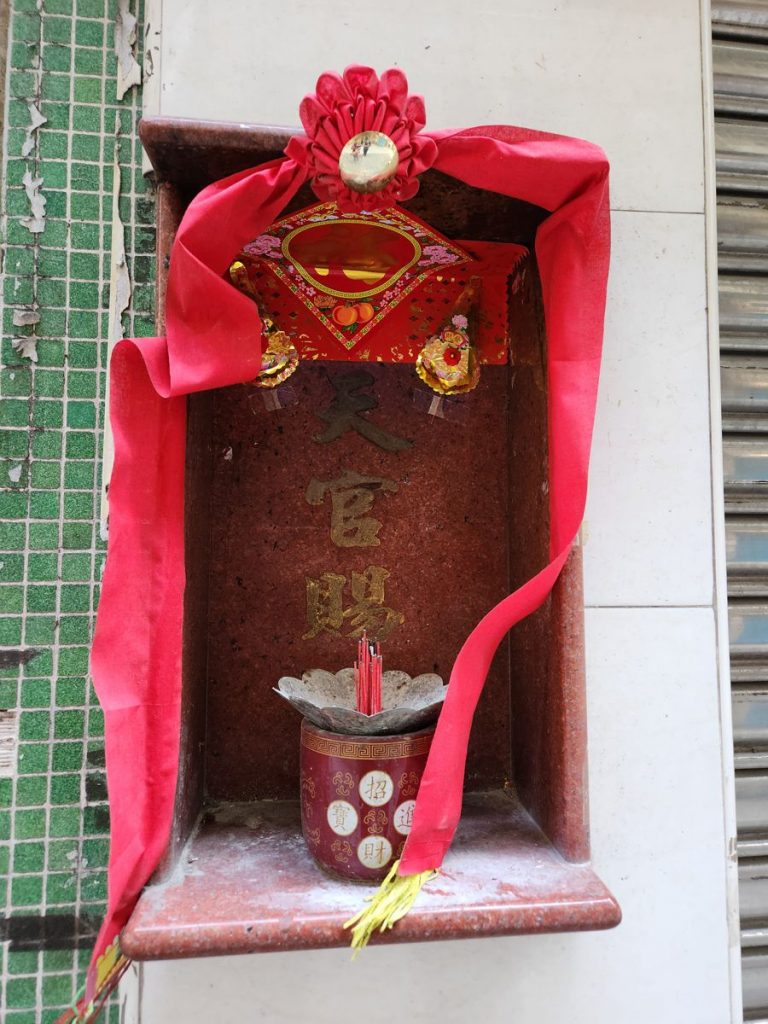
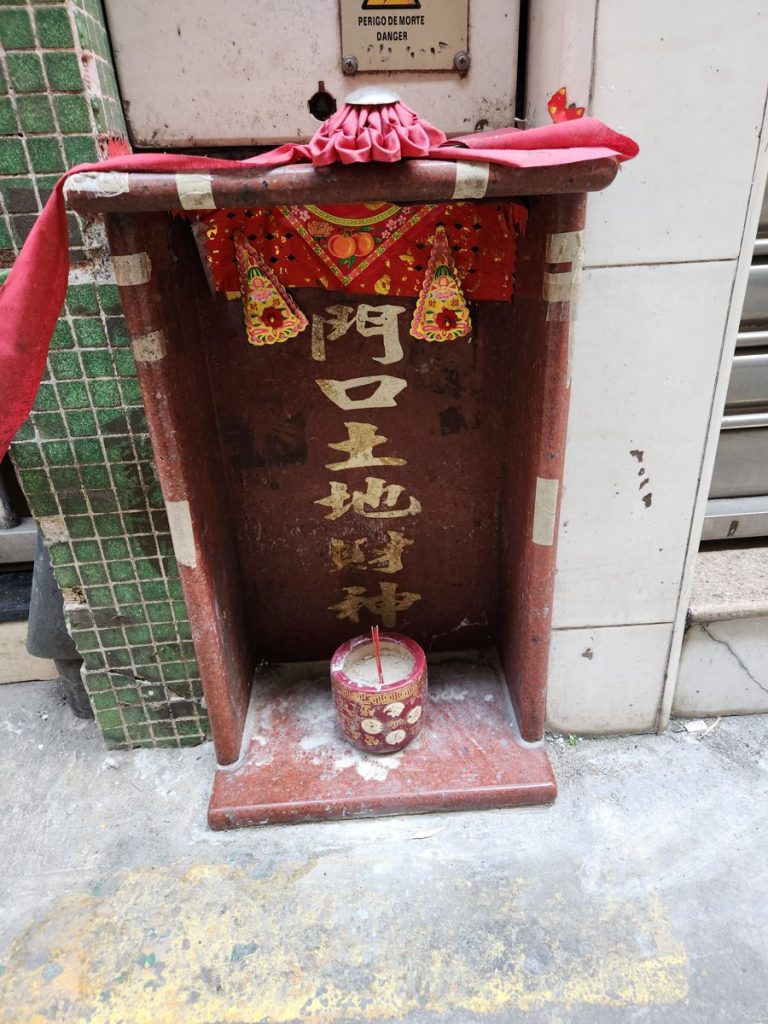
Wong Tai Sin
Last but not least, I was glad to have visited Sik Sik Yuen Wong Tai Sin Temple, a religious sect mostly unique to Hong Kong with an outlet at my old hangout in Manhattan Chinatown.
Formally, the Wong Tai Sin belief system self-identifies as a special fusion of Daoism, Buddhism, and Confucianism. I’d argue that such description applies to most Chinese temples and therefore doesn’t make it special at all. At the same time, the practice of Won Tai Sin appears different in its heavy leaning on fortune telling and worldly desires.
I used to think Wong Tai Sin (the “big deity” of the Wong family) was a person famous for fortune telling. That turned out not quite accurate, but this WTS headquarter temple was indeed all about fortune telling. You could pray and get a “qian” for free, but to have it explained you gotta visit the temple’s integrated shopping arcade of professional fortune tellers (161 stalls of them to choose from). The scale of that operation was impressive, and it was impossible not to wonder about the revenue flowing through those corridors.
Outside the main hall where you pray for your fortune telling “qian”, the biggest attraction within this temple complex was the hall of the five wealth gods. They hid behind a literal pay wall, but fear not because there was a clear menu of pricing options for those who’d like to pay their respect and whisper their wishes.
I had an opportunity to pick up a booklet of Wong Tai Sin’s teachings. Flipping through it quickly, the text appeared just like a Buddhist sutra. Looking more closely, though, I see passages about Buddha coming to the door, Guanyin bringing protection, making your children smart, and showing you with lots of money. I chuckled thinking it was either a mockery of Buddhist philosophy or a superstitious cult. But reeling myself back, isn’t that prejudice silly? Even the most pretentious among us wants good grades and enough money. For all I know, no religion in the world offers a contractual guarantee for the future anyway. So if we were to judge religions based on the peace of mind it provides, isn’t it nice for one to prioritize the present world over the afterlife?

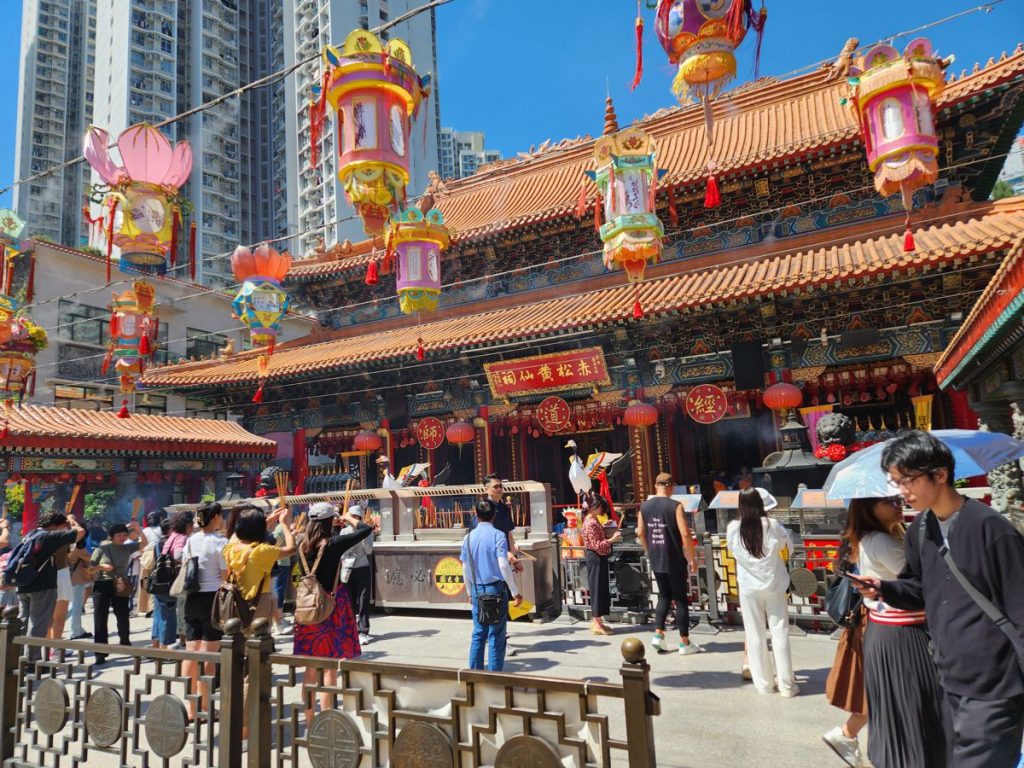
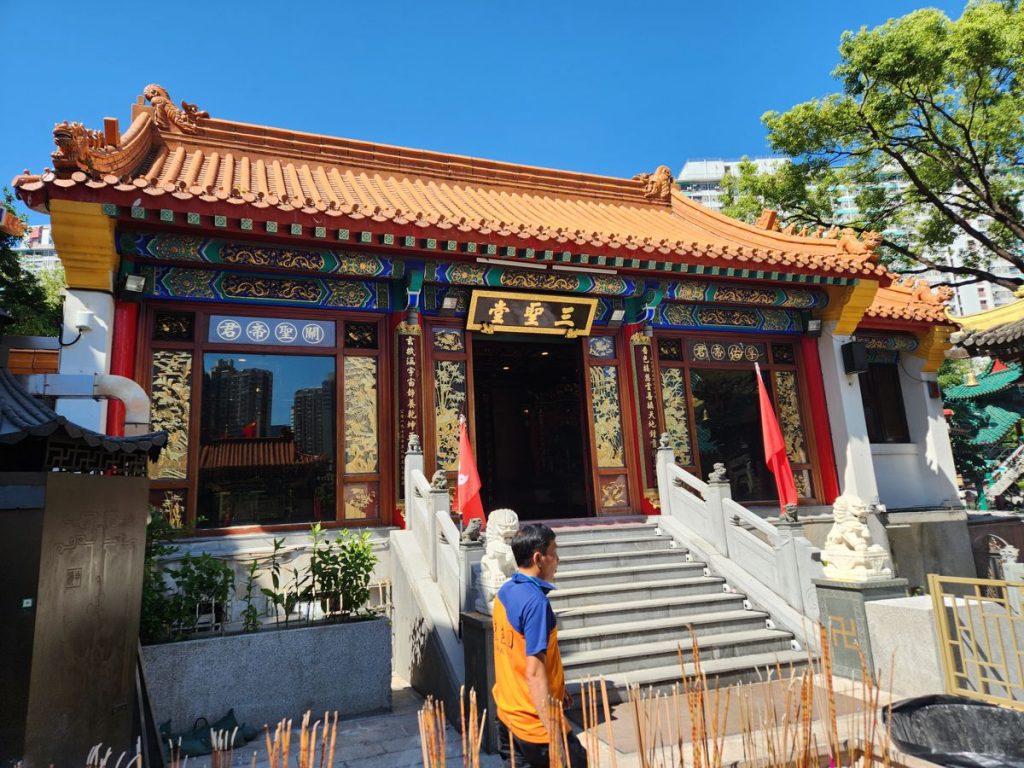
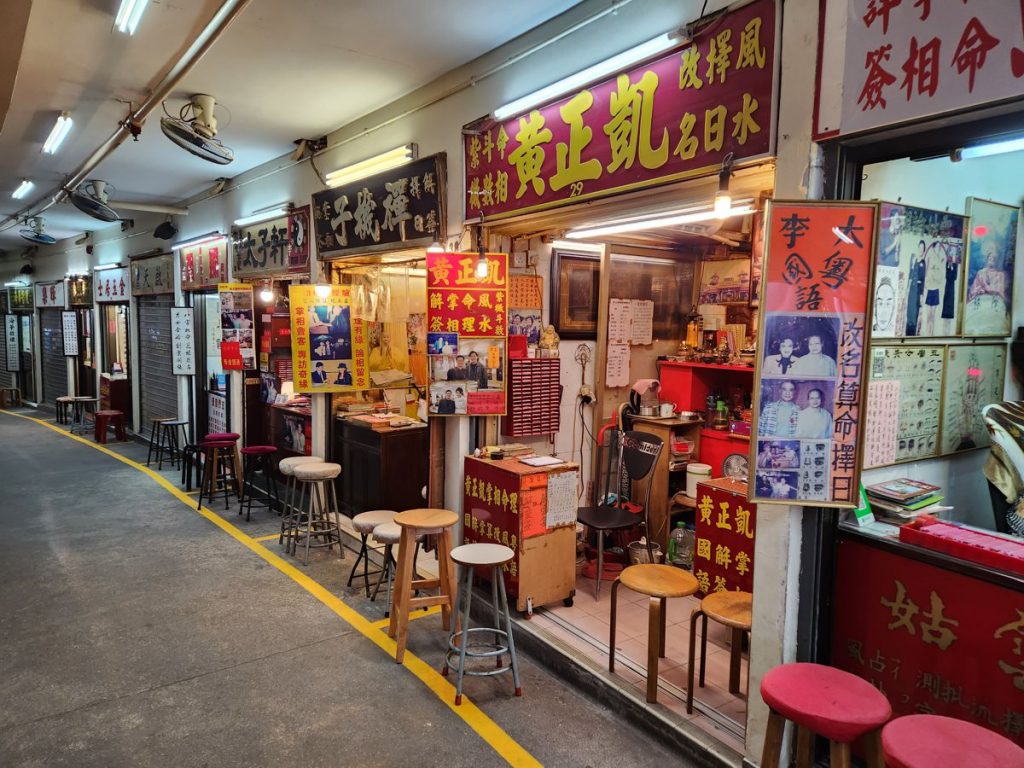
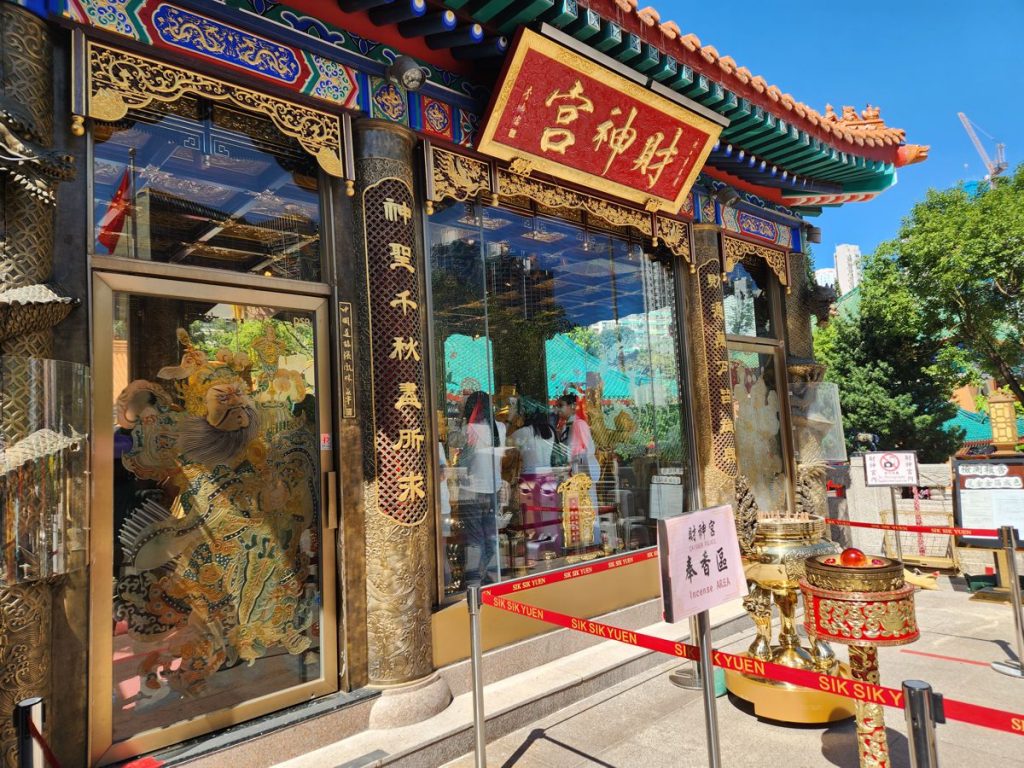
The analytical side of me could easily written an essay about how this temple is a low-cost, infinitely renewable big business milking fortunes from its customers without providing anything substantial in return. However, I was struck by the looks on many of the visitors’ faces: serious, sincere, and hopeful. It was more or less the same level of respect for a higher power as seen in Sikh, Muslim, Christian, Buddhist, and Daoist places of worship. Whatever I think of it honestly does not matter. This temple gives its followers peace in the heart and hope for the future; all the incense burning, gold foil plating, and money changing hands here are merely evidence of the religion working its magic in people’s minds.
HK & Macau 2024 Index
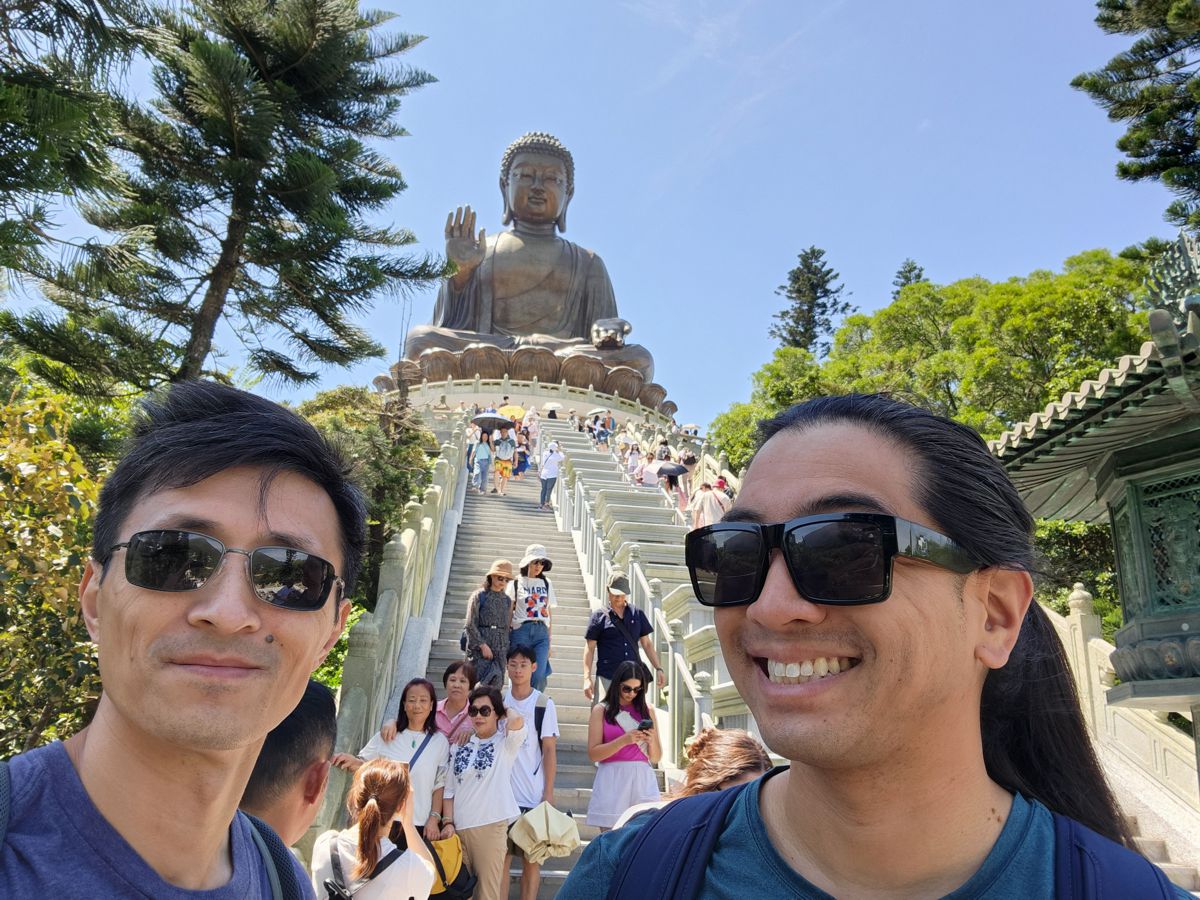
HK & Macau 2024 (5/9) – See – Peter's Blog
October 29, 2024 at 5:18 pm[…] Pilgrimage […]
HK & Macau 2024 (6/9) – Watch – Peter's Blog
November 6, 2024 at 1:13 am[…] Pilgrimage […]